#oscar’s quest for home races
Text
i think i can see the family resemblance


#f1#oscar piastri#leo leclerc#charles leclerc#formula 1#mclaren#monaco#oscar piastri f1#oscar’s quest for home races#twins#monaco gp
2K notes
·
View notes
Text
𝒜𝓊𝓈𝓈𝒾𝑒𝓈 𝐵𝑒𝓁𝑜𝓃𝑔 𝐼𝓃 𝒩𝒶𝓋𝓎
Oscar thought he wouldn't have to deal with anything similar to Alpine-Gate ever again. He was wrong.


Oscar Piastri x Horner!Reader

-> Everything Goes Wrong (pt1)
-> Oscar breaks up with his girlfriend and McLaren start treating him like Daniel, but then he meets someone new.
posted: 3 Feb 2024
-> A Storm Is Brewing (pt2)
-> Mark gives the Go-Ahead for possible negotiations with Red Bull, McLaren pull an Alpine, and Oscar makes a decision.
posted: 5 Feb 2024
-> The Build Up (pt3)
-> In a large bowl mix Contract Negotiations with two parts Announcements and three parts Life Updates, let cook for an hour and while it's still hot, sprinkle some jealousy and betrayal over the top as a nice garnish.
posted: 12 Feb 2024
-> Pre-season Bonding (pt4)
-> Where teams are announced, dinners are held and Oscar finds himself surrounded by people who are determined to help him on his way to greatness.
posted: 3 Mar 2024
-> Get This Party Started (pt5)
-> The season starts and it's a relatively calm affair, until it's not. Some things can be predicted while others show up like an unwanted Force Ghost from Star Wars.
posted: 29 Mar 2024
-> Down Time Down Under (pt6)
-> Oscar finds that having a crush having less than platonic feelings for your boss's only adult daughter is apparently free real estate for some of F1's biggest gossips
posted: 10 May 2024
-> Shift Happens (pt7)
-> Miami and Imola bring new challenges to the grid. Challenges such as finally initiating the romance part of your potential relationship- oh and being on the podium with your ex-teammate too.
posted: 19 May 2024
-> Warning Sainz (pt8)
-> Monaco, Canada and Spain oh my! Oscar decides to continue his quest for world domination (claiming home races) and prove that he's the best boyfriend his ex ever lost.
posted: 23 June 2024
-> Baby Got Track (pt9)
-> Adding two more GPs to his list of home races, Oscar realises that he's A-OK with having half his bags packed with things that aren't his.
posted: 10 July 2024
-> Silly Goose Extraordinaire (pt10)
-> When Y/n isn't there for two races, Oscar discovers that he's far more attached than he thought he was. At least it's almost the mid-year break!
posted: 5 Aug 2024
-> Red Bull Gives You Wings (pt11)(pending)
-> Mid-year break brings a lot of strong emotions, but there's only one thing that could make them even more intense...
posted:
-> Simply Lovely (pt12)
->
posted:
-> Big Ric Energy (pt13)
->
posted:
-> Red Bull School Of Racing (pt14)
->
posted:
-> 1st's The Worst, 2nd's The Best (pt15)
->
posted:
-> We Shenan'd Once, Let's Shenanigan (pt16)
->
posted:

This is an Ongoing Series!
1K notes
·
View notes
Text
out of the woods (ls2) masterlist
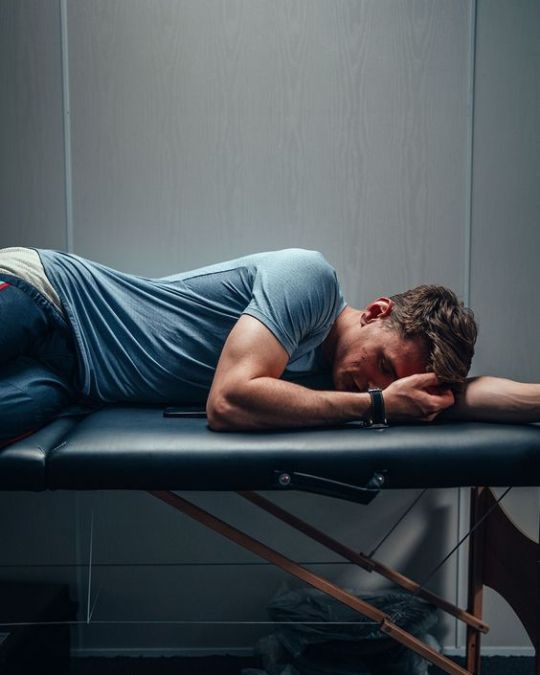
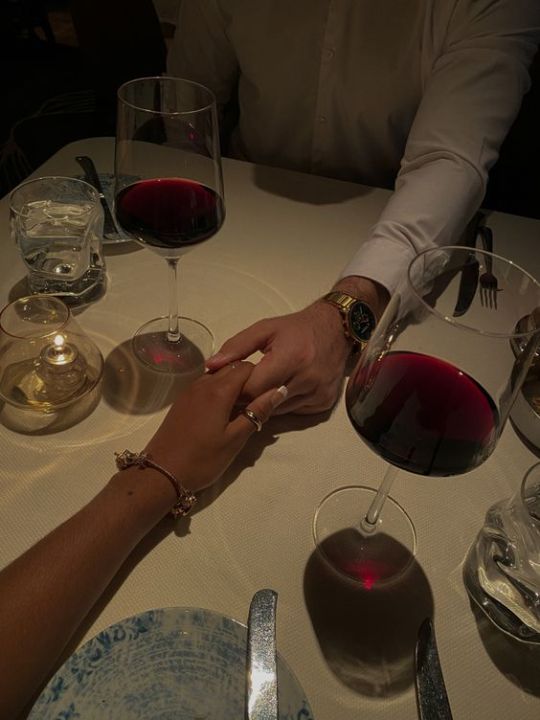
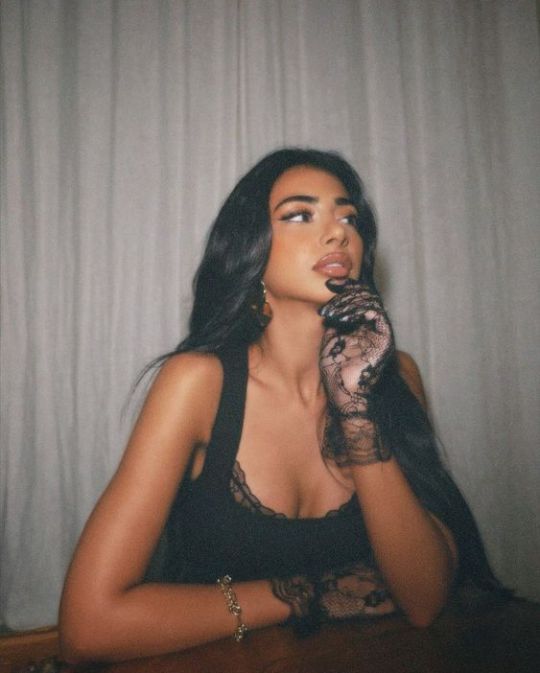
logan sargeant x ferrari!ex!oc
After a short break during her time as a Ferrari reserve driver, loud-mouthed driver Dhanishka Dubey resurfaces when she moves up to f1 under Ferrari. She’s back to terrorize her ex, none other than Logan Sargeant when she conquers him once again this season, just like before, just like always.
But when faced with your first love, and your only love, it's hard to let those feelings past. Especially when a relationship was prematurely ended, especially when she's everything you aren't, especially when you never got over his love.
continuation/sister series of marketing ploy (you do NOT have to read marketing ploy to understand this fic however!)
nicoles notes: in my masterlist era <3 listen. i love dhanishka and logan. y'all sleep on them!!! not much else to say here but enjoy enjoy enjoy !!
chapter one:
Before the season begins, Max and Charles gather all the drivers for a big 'team dinner.' All night Dhanishka and Logan are sneaking glances, riling eachother up, and ignoring each others presence. Until Logan decides to try and mend things in a sort of passive way. And then unshared emotions take over.
chapter two:
With a home race that couldn't go better, Dhanishka feels the confidence to let loose. But, Bahrain's post race celebration brings up some confusing feelings Dhanishka definitely won't handle the best. Charles plays the disappointed older brother role very well, Daniel is a bit of an enabler as is Lando, who also wins a bet with McLaren. Also, the FIA makes a weird call.
chapter three:
Sky News writes some interesting articles, and the Davis brothers cause a bit of a problem via ignorance and blackmail. Charles and Dhanishka have their most uneventful talk and the FIA makes their decision. Another article is written, Logan overshares, and somehow Charles, Oscar, and Alex end up on damage control.
chapter four:
With the fake dating (or real dating?) ploy underway, Dhanishka and Logan meet up to discuss their boundaries and their plans. It ends a bit hotter than either one expected, both physically and emotionally. Logan calls home, Dhanishka meets Olivia, and Lando actually has good advice.
chapter five:
With clear favoritism boosting all of Ferrari's tactics, Dhanishka makes a difficult decision after a crash causes her to see the true colors of her team, social media starts to discuss her mistreatments, and Logan sweeps in to save the day.
chapter six:
Logan and Dhanishka finally have the necessary breakthrough, Olivia delivers some bad news that Dhanishka already has a backup plan for. Logan just has a really good time at the end.
chapter seven:
Logan tries to give the two of short break in Bali. Which does succeed, but then the Canadian GP tears down anything Dhanishka had left to stand on. Good thing she's got Logan, the Norris' and Charles, right?
chapter eight
Dhanishka makes a difficult decision, but after 76 days, finds its hard to stay away from both her boyfriend and the world that raised her. So, she decides to make the comeback no one was expecting--but hoping for.
side quests:
breaking point:
Dhanishka runs to BWT to find Logan, to kiss his wounds better and cup his face in her hands. What she finds is not her boyfriend, but a scared boy hardened by misplaced anger. Aka a look back to the breakup.
#f1 fanfic#f1 smau#formula one fanfiction#logan sargeant fic#logan sargeant fanfic#logan sargeant fanfiction#ls2 fanfic#ls2 fic#ls2 fanfiction#f1 social media au
162 notes
·
View notes
Note
Oscar and a Canadian reader who are together during the Montreal GP. Oscar claims that they are married so it could be a “home race” please do what you see fits! 😼😼
Warnings: None
Pairing: Oscar Piastri x fem!reader
😺👀
The joke of Oscar and his quest to collect home races was one that was probably going to take years to die down - and the fact that he continued with it probably didn’t help make it settle. “So,” the interviewer smiled at Oscar as his hair blew, “you got Lance to adopt you yet?”. The Aussie laughed, shaking his head.
“Unfortunately, Charles did not allow me another father,” Oscar laughed. “Ah, so losing a home race streak?” the interviewer asked, chuckling at the joke. “Actually,” he tapped his nose, “I have found a way to make this my home race,”. The interviewer hummed, as if to ask him to explain. “See this?” Oscar showed the interviewer the little foil ring on his finger.
“I might have married Y/N,” he said, wiggling his ring finger as the interviewer chuckled. “So Y/N’s…Miss Piastri?” he asked. “Absolutely. She’s always been Miss Piastri, she just preferred not to be called it, for some odd reason,” Oscar said, joking. “Alright then, homeboy, good luck!”
99 notes
·
View notes
Note
can we get some bamf Oscar headcannons while we wait for the new chapter queen?😘
of course!!
oscar becomes the most followed f1 driver after he wins his first wdc and is one of the most well known athletes in the world
oscar is an adrenaline junkie. he has over 20 years of experience in racing, so he craves the action (start of his legendary side quests)
he actually takes one of the mclaren zak gifts him apart and builds it back together, just because
oscar IS a smooth talker. not flirty, not like sabrina, but he can still easily make her blush. it's the confidence... (sabrina is not the only woman blushing here, he has thousands of people crushing on him)
oscar still loves remote controlled cars. he has several of them in his home in switzerland and it's his prized collection (next to the helmets)
oscar is very good at surfing and waterboarding. not like his dad #4. every clip and picture of him surfing will go viral and get framed in the louvre
will unashamedly admit he loves romance movies, since he watches them with sabrina
qatar is his race. in his whole career, he wins 13 gp's there (not included sprints), in australia he claims 10 wins (breaking lewis' records once again)
27 notes
·
View notes
Note
Me thinking I need a reaction sequel to where’s the trophy and remembering there’s 12 chapters of big reputations that will almost fill that void (except they’re married and Ferrari is seemingly not trash in this one).
me not bashing ferrari??? who am I!! hahah
but also if I were going to do a sequel, which I probably won't (I guess unless something wild happens with this home race quest Oscar is on), I'd honestly probably focus more on the drivers than the outside world. just for something different hahah.
5 notes
·
View notes
Note
disclaimer: this is unserious
maybe there weren’t any oscar hearteyes because he knows MG was there. 👀
I'll also reiterate /notserious
anoOOnnnnNNNN you are playing with my overly tired mind bc what if 2024 Oscar was all happy and secure seeing that he and Lando are even more comfortable and close with each other after the winter break and yea!! he absolutely can keep this crush stowed deep inside where it only escapes out of his eyeballs when he's not careful!! it's all good!!
dundunnn Martin shows up to Saudi Arabia for the show afterward and he's all effortlessly cool and hanging out in McLaren hospitality like it's a second home and Oscar has to remind himself that it's cool!! he's totally fine hanging around when Lando's with Carlos or Daniel or either of the Maxes! so why is it impossible for him to move his legs and just go say hi and maybe even chat where Lando and Max are huddled together? why does it feel like intruding when they talk about their vacation when Oscar doesn't mind when Carlos and Lando talk about the restaurants they've had dinner in or the side quests Lando goes on with Daniel? bc Oscar can't be jealous !! haha if Lando and Martin are more than just friends then Oscar is ---- happy--- for them right !! Oscar just so happens to walk out way ahead of Lando for the drivers parade bc he wants to talk to Daniel and maybe get a little intel on Martin. and when the race is over and he sees Lando intentionally slipping his race suit lower on his ass right before Martin comes into view and Oscar is just giving them space right he doesn't need to be friends with everyone Lando knows that would be weird !!
it absolutely does not make his crush on Lando rise up and get lodged somewhere in his throat so that he excuses himself to immediately escape to the plane to go see his family back in Oz.
also I was gonna be mad at Martin for going right back to Amsterdam but then Lando hopped on with Max and I was like ahhhh good spend some time with hubby
5 notes
·
View notes
Text
Michelle Yeoh’s Longtime Love, Jean Todt: A Journey of Love and Support
Intro.
Let’s discover the adorable story of Michelle Yeoh’s enduring love with Jean Todt. This article throws light on their extraordinary relationship, from their casual meeting in Shanghai to their historic wedding after 19 years of engagement. Let’s take a look at the life of the man who has been Michelle Yeoh’s constant companion in crucial moments of life.
A rendezvous and a whirlwind romance in Shanghai
Famous actress Michelle Yeoh and former Ferrari CEO Jean Todt had a fateful meeting in June 2004 in Shanghai. Their connection was instant, and within a month, they got engaged and the two embarked on a beautiful journey of love.
Witness historical moments together
Throughout their journey, Michelle Yeoh and Jean Todt have celebrated many important achievements. One of the most unforgettable moments was Yeoh’s historic Oscar win in 2023, where she created history as the first Asian woman to win the coveted Best Actress award. Jean Todt proudly stood by her side and caught the world’s attention with her love and support.
Tying the knot after a long engagement

After being engaged for 19 years, the couple finally tied the knot on July 27, 2023, in Geneva. The news was happily shared by Ferrari Formula 1 driver Felipe Massa on Instagram along with a photo from their wedding ceremony. The wedding was a heartwarming celebration amidst dear family and friends.
getting to know Jean Todt
Jean Todt is from France, he was born on February 26, 1946, in Pierrefort, Cantal. His educational journey took him to the prestigious École des Cadères School of Economics and Business in Paris before his passion for motorsports surfaced.
A remarkable career in motorsport
Todd’s exciting career in motorsport began as a co-driver in 1966, eventually helping him win the Manufacturers’ World Rally Championship in 1981. He later served as director of racing for Peugeot until 1993. His remarkable expertise attracted Scuderia Ferrari, where he found a new home and eventually rose to the position of CEO from 2004 to 2008.
Unwavering support in career endeavors
In their nearly two-decade-long relationship, Michelle Yeoh and Jean Todt have supported each other’s careers. Whether cheering Yoh from the stands at various motor races, including the British Grand Prix or gracing Hollywood events to support him, Todd has been a constant source of encouragement and love.
proud father
https://usagoodnews.net/wp-content/uploads/2023/07/Michelle-Yeoh-.png
michelle yeoh movies
Michelle Yeoh is a talented Malaysian actress known for her roles in various action, drama, and martial arts films. Here are some of her notable movies:
“Crouching Tiger, Hidden Dragon” (2000) – In this critically acclaimed martial arts film directed by Ang Lee, Michelle Yeoh portrays Yu Shu Lien, a skilled warrior who embarks on a quest to retrieve a stolen sword.
“Tomorrow Never Dies” (1997) – Yeoh played the role of Wai Lin, a Chinese secret agent, in the James Bond film starring Pierce Brosnan as Agent 007.
“Supercop” (1992) – Also known as “Police Story 3: Super Cop,” this Hong Kong action film features Michelle Yeoh as Inspector Jessica Yang, who collaborates with Jackie Chan’s character to take down a drug lord.
“Heroic Trio” (1993) – In this Hong Kong superhero film, Yeoh stars alongside Anita Mui and Maggie Cheung as three female crimefighters with unique abilities.
“Memoirs of a Geisha” (2005) – Although not a lead role, Yeoh’s performance in this film adaptation of Arthur Golden’s novel is memorable as she plays Mameha, a mentor to the protagonist.
“The Lady” (2011) – In this biographical drama, Michelle Yeoh portrays Aung San Suu Kyi, the Nobel Peace Prize laureate and leader of the pro-democracy movement in Myanmar (Burma).
“Police Story 3: Super Cop” (1992) – The third installment in the “Police Story” series, where Yeoh reprises her role as Inspector Jessica Yang alongside Jackie Chan.
“Tai Chi Master” (1993) – Also known as “Twin Warriors,” this martial arts film features Michelle Yeoh alongside Jet Li as two friends who take different paths in life.
“The Touch” (2002) – Yeoh plays a martial arts expert seeking revenge for her sister’s murder in this action film.
The love story of Michelle Yeoh and Jean Todt is one of age-old love, commitment, and unwavering support. From their casual meeting in Shanghai to sharing the red carpet at Hollywood’s grandest events, their love has endured and triumphed over the years. With their recent marriage, they have taken their bond to new heights, and have shown the world the strength and beauty of their extraordinary relationship.
Michelle yeoh net worth
Michelle’s net worth is around $40 million.
Read Also
Paul Mescal Got ‘Gladiator 2’ Role After Producers Saw Him Shirtless in a Play: ‘It Was Electric’
TomDaya Timeline: Unveiling a Captivating Love Story of Zendaya and Tom Holland
3 notes
·
View notes
Text

1: grill the grid is back!!!!!!
2: yuki's rear wing i will never forget you
3: sargeant stans were fuming after that one. valid
4: LMFAO i mean
5: free max
6: ollie bearman moment
7: yuki again...... i think pierre also was pretty bonkers
8: i can't remember this happening but it sounds like smth that would happen lmfao
9: HATE his ass get OFF
10: oscar and his quest for home races
0 notes
Text
Last month, “Oppenheimer” began its awards season romp with big wins at both the Golden Globe and Critics Choice ceremonies. Its next big test will be at the upcoming BAFTA Awards on February 18. That’s just four days after Valentine’s Day. And Universal Pictures‘ “Oppenheimer” will still be feeling the love.
Here are five reasons why it is 100% unbeatable in the BAFTA race for Best Film.
1. It’s the undisputed Academy Award frontrunner.
BAFTA has unfortunately turned into just another awards show that seems determined to predict the eventual Oscar winner for Best Picture. Ironically, that’s meant rewarding films that ultimately went on to lose the top Academy Award – like 2014’s “Boyhood,” 2015’s “The Revenant,” 2016’s “La La Land,” 2017’s “Three Billboards Outside Ebbing, Missouri,” 2018’s “Roma,” 2019’s “1917” and 2021’s “The Power of the Dog.” You have to wonder if they finally surrendered last year when the German underdog “All Quiet on the Western Front” won the battle over the inevitable Oscar victor “Everything Everywhere All at Once.” This year, the stars in the motion picture multiverse seem universally aligned behind “Oppenheimer.” That bodes well for its BAFTA prospects.
2. Its 13 BAFTA nominations indicate broad support.
Just like at the Oscars, it contends in a dozen-plus-one lucky categories. It didn’t miss anywhere. Furthermore, it’s expected to take home a number of those trophies. Some are above-the-line (Christopher Nolan for Best Director, Cillian Murphy for Best Actor and Robert Downey Jr. for Best Supporting Actor). Others are below-the-line (Best Cinematography, Best Film Editing and Best Sound, to name a few). Unless “Oppenheimer” seriously underperforms in its BAFTA bids, it’s hard to see it falter in its quest for Best Film.
3. It’s a UK-US production, but might as well be completely British.
While the people and events depicted in “Oppenheimer” are obviously American, many of the names associated with it hail from the British Isles. Nolan and his producing partner and wife Emma Thomas. The Irish Murphy who plays the title role. Emily Blunt who portrays his wife. And additional assorted talents like Kenneth Branagh, Tom Conti, Florence Pugh and Gary Oldman. For most BAFTA members, voting for “Oppenheimer” will practically be a patriotic act.
4. Best Film and Director have generally been matching at BAFTA in recent years.
As the Picture/Director split has grown more common at the Oscars, it has become a rarer occurrence at the BAFTAs. In the past decade, eight of the 10 films that claimed Best Film also earned honors for directing. (The exceptions were for 2013’s “12 Years a Slave” and 2017’s “Three Billboards Outside Ebbing Missouri.” Directing prizes went to Alfonso Cuaron for “Gravity” and Guillermo del Toro for “The Shape of Water” in those respective contests.) With Nolan being a jumbo lock for Best Director at BAFTA, we have to view “Oppenheimer” as being the clear favorite for Best Film.
5. There’s simply no film that can take it down.
“Killers of the Flower Moon” failed to score a Best Director nomination for Martin Scorsese and a Best Actress bid for Lily Gladstone, suggesting that BAFTA members aren’t exactly over-the-moon about the movie. Similarly, “Poor Things” was robbed of a Best Director spot for Yorgos Lanthimos as well as Best Supporting Actor citations for Willem Dafoe and Mark Ruffalo. That makes “Poor Things” a pretty poor threat. ”Anatomy of a Fall” is likely to rise in other areas — like Best Non-English Film, Best Original Screenplay and perhaps even Sandra Huller for Best Actress. And as for “The Holdovers” — don’t hold your breath. That leaves “Oppenheimer” the last film standing — blasting away at BAFTA before continuing on a collision course with Oscar.'
#BAFTAs#Oppenheimer#Poor Things#Anatomy of a Fall#The Holdovers#Christopher Nolan#Cillian Murphy#Kenneth Branagh#Florence Pugh#Gary Oldman#Emily Blunt#Emma Thomas#Robert Downey Jr.#Oscars
0 notes
Text
𝕎𝕒𝕣𝕟𝕚𝕟𝕘 𝕊𝕒𝕚𝕟𝕫
Oscar Piastri x Horner!Reader
Monaco, Canada and Spain oh my! Oscar decides to continue his quest for world domination (claiming home races) and prove that he's the best boyfriend his ex ever lost.
Warnings: my usual warnings apply :P (for the love Nicole Piastri, please pretend oscar's wearing an rbr suit. i beg)
⋆Ember's Notes⋆ I will try my best to get each chapter out on the weekend of the last race mentioned in the chapter. For example, this is being posted in time for the Spanish GP, and the next should be out in time for Silverstone as that will be the last GP mentioned in the next chapter.
series masterlist | previous part | next part

MonacoGP
instagram.com



liked by oscarpiastri, misshoney.lemon and others
yn.horner He may be a silly goofy guy, but he's OUR silly goofy guy
tagged: misshoney.lemon
view all comments
user5987 he? HE?
user4351 she gets one dog and somehow also brings home a whole ass MAN
-> misshoney.lemon uhhhh Mum says I'm much more than JUST a dog.
-> user4351 misshoney.lemon you're so right, that's mb
user2457 mum? w-what happened to dad?
-> yn.horner yeah so turns out I can't physically date/marry Javi Gutierrez
-> pascalispunk not with that attitude😉
danielricciardo right. what's all this then
-> yn.horner yeah nah nah yeah. Nah nah but yeah y'know yeah nah.
-> danielricciardo 😨
-> yn.horner two can play that game mf
oscarpiastri how much did you freak out when Pedro commented
-> yn.horner freak out? me? i didn't freak out.
-> pascalispunk not even a lil bit? 😓😓
-> yn.horner skhdajdag okay maybe i DID freak out
-> pascalispunk yay 😁
-> oscarpiastri 😆😆
imessage

twitter.com
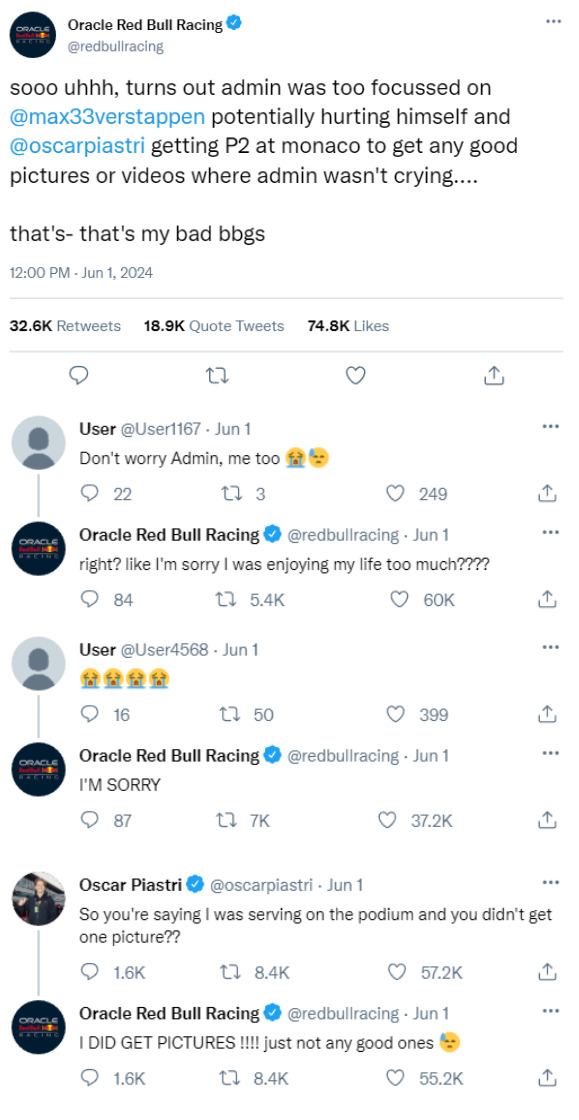
instagram.com

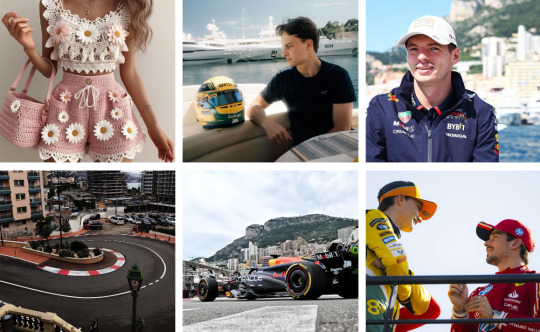

liked by scuderiaferrari, oscarpiastri and others
redbullracing Picture this:
1. admin's new fit (shoutout to thatcrochetgirl 😘)
2. oscar laid eyes on his one true love
3. max doesn't know how to look naturally cool
4. the hairpin of all hairpins
5. car.
6. that moment when u share a podium w/ ur new dad and his weird spanish sidechick (shoutout to scuderiaferrari for the pic, rbr admin didn't get any 😓)
tagged: oscarpiastri, maxverstappen1, charles_leclerc, scuderiaferrari
view all comments
user5598 Admin really said "yeah oscar got 2nd at monaco, but look at my clothes"
-> yn.horner the girlies that get, get it
scuderiaferrari We got you girl 😘🫶
-> redbullracing actually the loml
-> scuderiaferrari 🤭🤭
-> oscarpiastri ayo? 🤔
-> maxverstappen1 ayo? 🤔 (x2)
-> charles_leclerc ayo? 🤔 (x3)
-> carlossainz55 ayo? 🤔 (x4)
-> redbullracing look away
user5487 not the redbull and ferrari admins falling in love while their drivers are at each others throats
-> redbullracing don't let your drivers stop you from finding the love of your life
-> user6842 redbullracing periodt 💅💅
CanadaGP
instagram.com

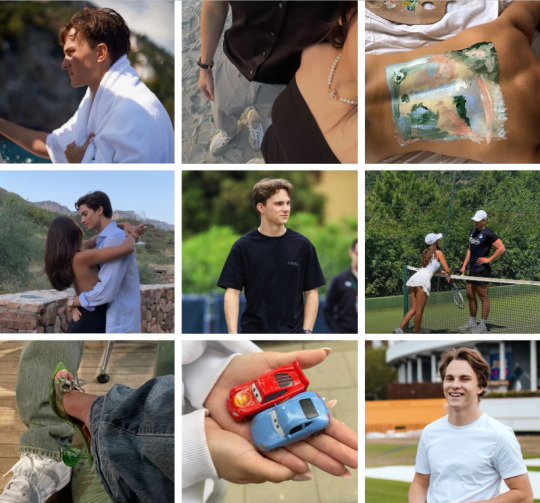

liked by yn.horner, nicolepiastri and others
oscarpiastri In between races 🤟
view all comments
user5827 Oscar soft launching before the mid season hit was definitely NOT on my bingo card
-> user7593 but after the mid season was???
-> user5827 user7593 I had hope
yn.horner please tell me you're better at tennis than you were last year
-> oscarpiastri yn.horner I'll have you know that my tennis skills have vastly improved 🙄🙄
danielricciardo her shoes look so painful 😬😬
-> oscarpiastri she has assured me they're a lot comfier than they look
-> heidiberger where did she get them?? I need a pair rn
-> oscarpiastri "I have an extra pair if she wants them." heidiberger
-> heidiberger i love her
twitter.com

imessage

twitter.com
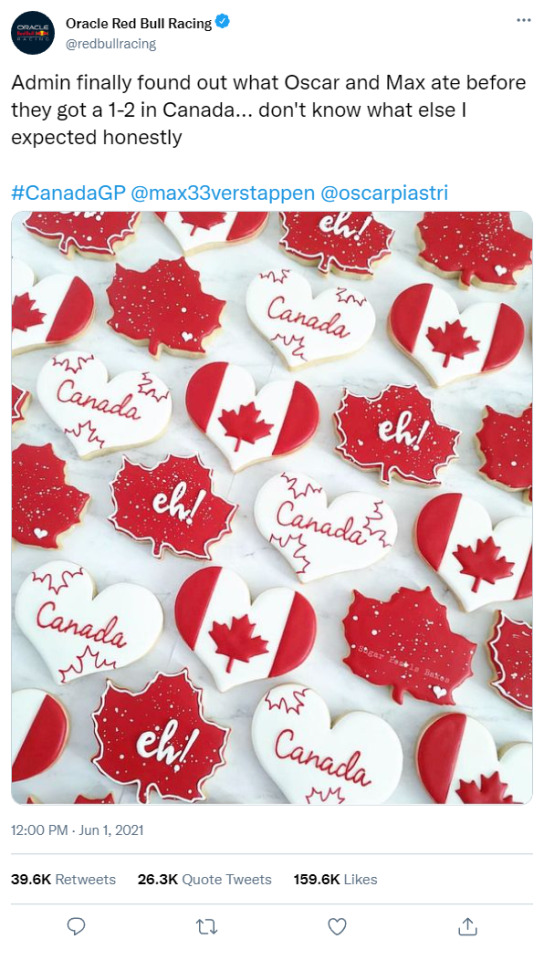
SpainGP
imessage

instagram.com

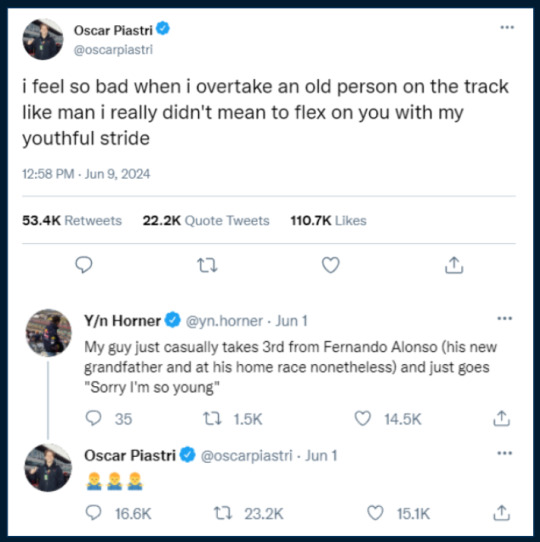

liked by fernandoalo_oficial, oscarpiastri and others
redbullracing is RBR making an instagram post of a twitter post? yes.
view all comments
oscarpisatri peak content really
user5987 RBR admin is iconic for this
maxverstappen1 "Flex on you with my youthful stride" 🤣🤣
twitter.com
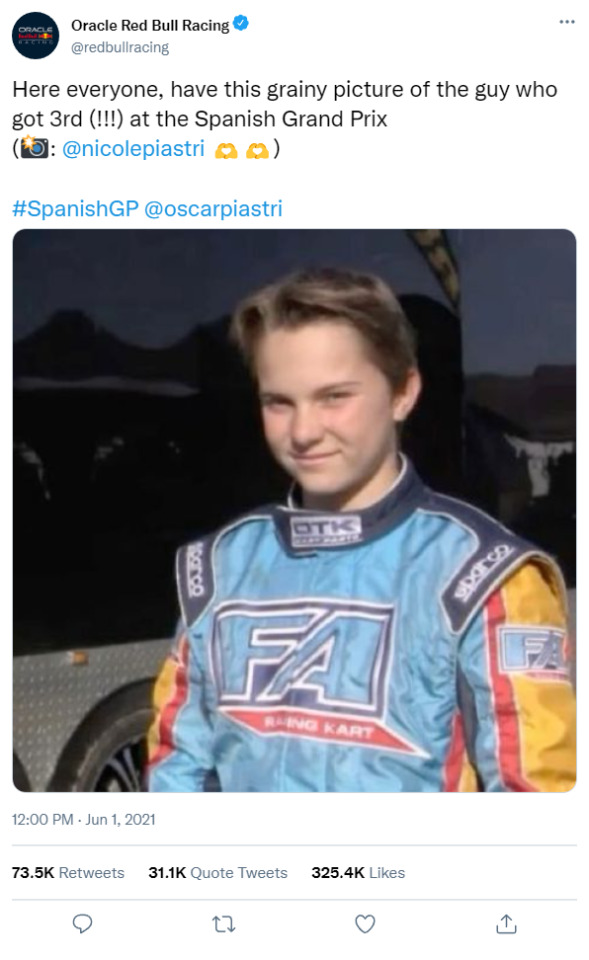
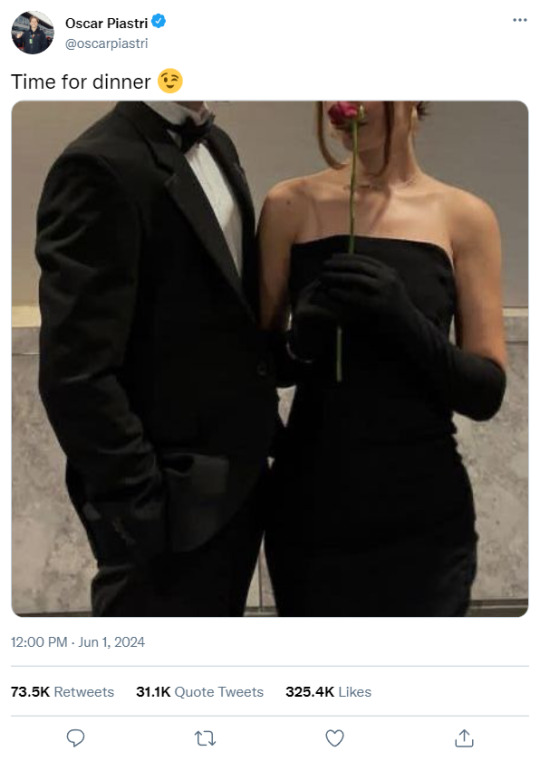
only people oscarpiastri has mentioned can reply
imessage
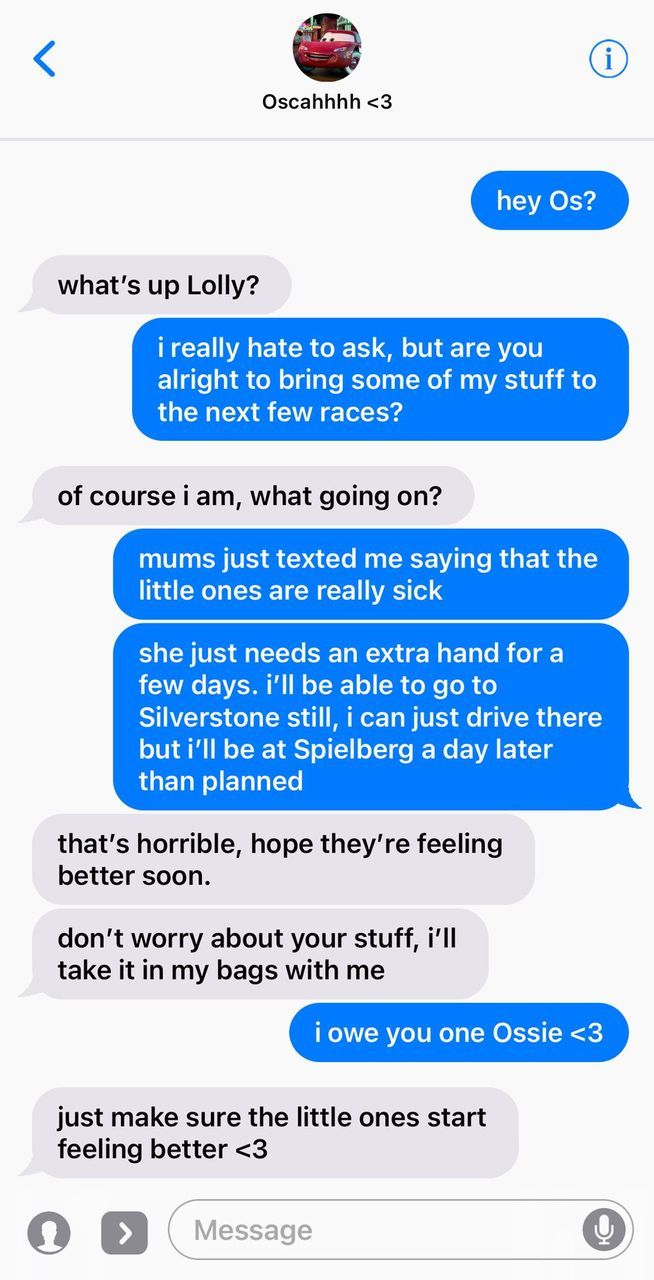

putting the taglist back on the main posts lmao
TAGLIST (closed)((i really hope everyone actually gets tagged, i'm this 🤏close to just getting rid of the taglist all together 🙃🙃))
@barnestatic @fionaschicken @fanficweasley @sltwins @storminacloud @halleest @formulaal @ems-alexandra @iloveyou3000morgan @christianpulisic10 @fangirl-dot-com @nikfigueiredo @yourbane @purplephantomwolf @eternalharry @cherry-piee @starssfall @33-81 @jpg3 @marie0v @d3kstar @applopie @aquangxl @eugene-emt-roe @woozarts @scott-mccall-could-lift-mjolnir @thatgirlthatreadswattpad @1-800-simpingcowbaby @marshmummy @landossainz @alwaysboredsworld @mellowarcadefun @dannyleclerc @lozzamez3 @spookystitchery @scarletwidow3000 @moldyshorts1997 @hiireadstuff @bearyyyy @evie-119 @hwalllllllelujah @nixily @generalnav @hdigditditdjgd @kqliie @lokideservesahug @littlegrapejuice @halfdeadsage @zzzhealy
#formula 1 x you#f1 x reader#f1 fluff#formula one#formula 1#oscar piastri smau#oscar piastri fanfic#oscar piastri fluff#oscar piastri imagine#oscar piastri x reader#oscar piastri x you#oscar piastri#oscar piastri social media au#oscar piastri series#op81 imagine#op81 x reader#op81 fic#op81 fluff#op81#oscar piastri leclerc#aussies belong in navy#rb!oscar#rb!op81
740 notes
·
View notes
Text
Sofia Coppola’s Path to Filming Gilded Adolescence
There are few Hollywood families in which one famous director has spawned another. Coppola says, “It’s not easy for anyone in this business, even though it looks easy for me.”
By Rachel Syme
January 22, 2024
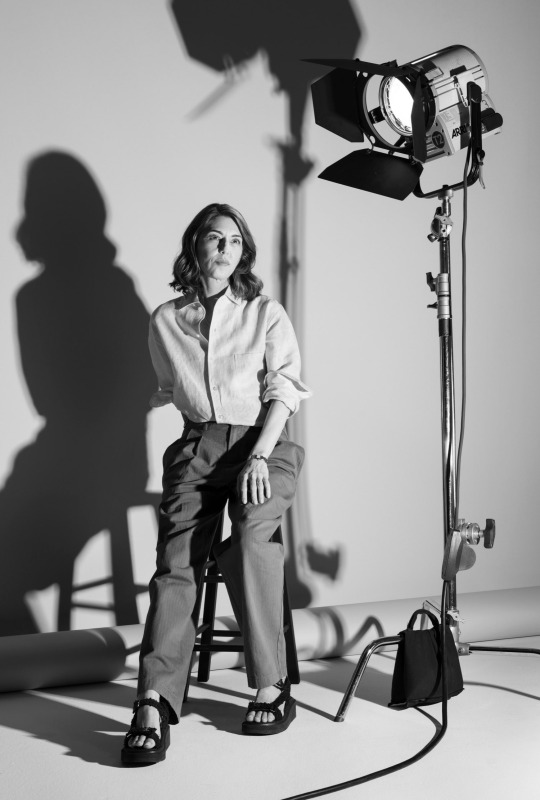
From Marie Antoinette to Priscilla Presley, Coppola’s protagonists enjoy enormous privilege but little autonomy.Photograph by Thea Traff for The New Yorker
Wshen Eleanor Coppola went into labor with her third child, on May 14, 1971, at a hospital in Manhattan, her husband, the director Francis Ford Coppola, was on location in Harlem, shooting a scene for “The Godfather.” Hearing the news, he grabbed a camcorder from the set and raced over to capture the moment. “When they say, ‘It’s a girl,’ my dad gasps and nearly drops the camera,” Sofia Coppola told me recently, of her birth video. “My mom is there, just trying to focus.” The footage—which has been screened by the family multiple times over the years, and as part of a feminist art installation designed by Eleanor—was the first of many instances in which Sofia would be seen through her father’s lens. When she was just a few months old, Francis cast her in her first official film role, as the infant in the dénouement of “The Godfather,” in which Michael Corleone, the ascendant boss of the Corleone crime family, anoints the head of his newborn nephew as his associates murder rival gangsters one by one.
There are plenty of distinguished bloodlines in the history of Hollywood—the Selznicks and the Mayers, the Warners, the Hustons, the Bergman-Rossellinis, the Fondas—but very few, like the Coppolas, in which one famous director has spawned another. After an early life spent in front of the camera, Sofia Coppola made a career behind it, becoming one of the most influential and visually distinctive filmmakers of her generation, with eight features to her name. Her second, “Lost in Translation,” from 2003, earned her an Oscar for Best Original Screenplay and a nomination for Best Director, making her the first American woman recognized in that category. Her career, of course, has been bolstered by an unusual wealth of resources. Francis’s company, American Zoetrope, has been a producer on all her movies. When she made her début, “The Virgin Suicides,” in 1999, she was able to cast an established star, Kathleen Turner, with whom she’d appeared as a teen-ager in her father’s movie “Peggy Sue Got Married.” She got permission to shoot “Somewhere,” her fourth film, inside the clubby Hollywood hotel the Chateau Marmont because in her youth she was a regular there, and even had a private key to the hotel pool. Still, no director can get a project green-lighted at a snap of the fingers, especially in today’s franchise-glutted Hollywood, and especially as a female director in an industry that remains dominated by men. Coppola is self-aware enough to know that it would be bad manners for someone in her position to complain. But she told me, “It’s not easy for anyone in this business, even though it looks easy for me.”
When we first met, in the fall of 2021, for breakfast near her home in the West Village, Coppola had spent the previous two years at work on her most ambitious venture to date, a miniseries, for Apple TV+, based on the Edith Wharton novel “The Custom of the Country,” from 1913. Coppola had adapted the book into five episodes and cast Florence Pugh in the lead role of Undine Spragg, a Midwestern arriviste on a desperate quest to infiltrate Gilded Age Manhattan society. Coppola, like Wharton, is known for her gimlet-eyed portrayals of a rarefied milieu, and for her insight into female characters who enjoy enormous privilege but little autonomy. “Marie Antoinette,” her most expensive movie, had a budget of forty million dollars, still modest by Hollywood standards; for “Custom,” she was planning for, as she put it, “five ‘Marie Antoinettes.’ ”
At breakfast, though, she told me, “Apple just pulled out. They pulled our funding.” Her voice was quiet, and her face—high cheekbones, Roman nose—was placid. “It’s a real drag,” she said. “I thought they had endless resources.” During the project’s development, she’d gone back and forth with executives (“mostly dudes”) on everything from the budget to the script. “They didn’t get the character of Undine,” she recalled. “She’s so ‘unlikable.’ But so is Tony Soprano!” She added, “It was like a relationship that you know you probably should’ve gotten out of a while ago.” (Apple did not respond to request for comment.)
Coppola grew up watching Francis do battle with movie studios. The success of the “Godfather” films hardly assured him funding equal to his ambitions, and he often went to harrowing lengths to get his projects made independently, driving himself to the brink of bankruptcy or nervous breakdown. “Hearts of Darkness,” a documentary co-directed by Eleanor about the notoriously tortured production of “Apocalypse Now,” is subtitled, only a bit hyperbolically, “A Filmmaker’s Apocalypse.” (At the age of eighty-four, Francis is financing a new film, “Megalopolis,” with a hundred and twenty million dollars of his own money, freed up by the sale of a portion of the family’s wine business.) Coppola absorbed from her father the ethos that it was never worth it to cave to the creative demands of executives. In 2014, she agreed to make a live-action version of “The Little Mermaid” for Universal Studios, but amid disputes during development (including, she said at the time, an executive asking her, “What’s gonna get the thirty-five-year-old man in the audience?”) she walked away from the job. “I don’t actually want a hundred million dollars to make a movie,” she told me, of studio deals with strings attached. “I learned it’s better to do your own thing.” She refuses to take on projects unless she is guaranteed the right to choose her creative team and control the final cut.
In January of 2022, after trying in vain to secure alternative funding for “Custom,” Coppola moved on to a new project, an independent film adapted from Priscilla Presley’s 1985 memoir, “Elvis and Me.” Presley’s relationship with Elvis began when she was just fourteen. Like Marie Antoinette, she found herself unhappily married to a King. Paging through the book while in bed with a case of covid, Coppola had begun to see the picture unfolding in her mind. “I just thought about her sitting on that shag carpet all day,” she recalled. She wrote a draft of the script quickly and told her longtime producer, Youree Henley, that she wanted to be done shooting by the end of the year. She was undeterred by the coming release of Baz Luhrmann’s eighty-five-million-dollar film “Elvis,” which was due out in a few months. A rhinestoned frenzy of a bio-pic, Luhrmann’s movie portrayed Priscilla as a marginal character and a happy helpmate. Coppola called Presley and said, “That’s not how I see you at all,” and after hearing Coppola’s vision Presley signed on as a producer.
“Marie Antoinette” was filmed inside the real Versailles, a cinematic coup. For “Priscilla,” the Elvis Presley estate, wary of a film told from Priscilla’s perspective, denied Coppola access to Graceland. Coppola’s production team instead constructed the façade and the interiors of Elvis’s Memphis mansion on a soundstage outside Toronto. I visited one afternoon in November of 2022, as the shoot was under way. Off set, Coppola, who is fifty-two, dresses with understated elegance—Chanel slingbacks, collared blouses. Now she was wearing her only slightly less polished “set uniform,” gray New Balances and a black Carhartt fleece over a Charvet button-down. She led me through the hangarlike space and into the ersatz Presley home. The entrance was flanked by two large lion statues. In the gaudy living room, she pointed to a floral arrangement. “Those are real orchids,” she said. “It surprised me, with our budget. How extravagant.”
Coppola’s team had budgeted for forty days of shooting, already a squeeze, but at the last minute a piece of financing had fallen through, and she’d had to slash the story to be filmed in just a month, for less than twenty million dollars. Much of the movie is set in the Memphis summer, but they were filming as winter approached, which was cheaper, so Coppola had to coach her cast, shivering through outdoor scenes in their bathing suits, to “act warm.” Instead of filming two long shots she’d wanted in Los Angeles, of Priscilla driving a convertible down a palm-lined street and swan-diving into a pool, Coppola saved money by borrowing footage from a Cartier commercial she’d shot in 2018, with an actress who kind of looks like “Priscilla” ’s lead, Cailee Spaeny, at least from behind.
Whether set in a luxury hotel in Tokyo, like “Lost in Translation,” or in suburban Michigan, like “The Virgin Suicides,” Coppola’s films are sumptuous but also slightly clinical. One of her œuvre’s visual hallmarks is a protagonist gazing out a window, sealed off from the world beyond. “You know I can’t resist a trapped woman,” she said. Yet, even when her female characters are confined, they achieve a degree of self-definition through adventures in style. No filmmaker has so astutely depicted the cloistered atmosphere of teen-age girlhood or the expressive power of its trappings. She is a master of the messy-bedroom mise en scène: piles of clothing and impractical shoes, poster-plastered walls, vanities cluttered with perfume bottles and porcelain figurines. The director Chloé Zhao, who won Best Director at the 2021 Oscars for her film “Nomadland,” told me that she admires Coppola for “world-building that isn’t just based on facts but on emotions.” She added, “There’s a receptivity to her work. To have a commitment to that kind of femininity is hard.” The director Jane Campion, who counts “The Virgin Suicides” among her favorite films, told me that Coppola’s light touch with actors and her attention to surfaces can be deceptive. “Her work is very powerful to me, because it’s got deep roots,” she said. But Coppola’s films have sometimes struck critics as longer on style than on substance, and too close to the privileges they depict to effectively critique them. A few months ago, Coppola sent me an e-mail, unprompted, in which she took issue with a notion that has resurfaced throughout her twenty-five-year career: “I don’t understand why looking at superficiality makes you superficial?!”
Coppola told me she could see herself, in an alternative life, as the editor of a magazine, “like Diana Vreeland,” who commanded Vogue in the sixties. Coppola is an avid curator of images and looks; Campion recalled that once, when they were both judges at Cannes, Coppola offered to help style her, and the next day two huge boxes from the luxury fashion brand Celine arrived at Campion’s hotel. Coppola begins every film project by gathering visual inspiration. In her makeshift office on the soundstage, she had covered a large bulletin board with imagery including the Presleys’ wedding photographs, a glamour shot of Priscilla as a teen-ager, and several William Eggleston pictures of an empty Graceland. There is a famous Bruce Weber photo of Coppola’s stylishly bestrewn home office at the time of “The Virgin Suicides,” and this workspace bore some resemblance. On her desk were pink Post-it notes, a Fujifilm Instax camera, and a half-burned Diptyque candle; on the floor lay wine bottles from the Coppola vineyard (which also makes a “Sofia” champagne that comes in tiny pink cans with individual straws). The director Quentin Tarantino, whom Coppola dated in the two-thousands, recalled her once showing him the look book for “Marie Antoinette.” “It was exquisitely put together, yet you could still tell it was handmade,” he said, “by the loving hands of a fine artist.” He went on, “She had a page of donuts with a pink glaze. I asked her, ‘What’s with the donuts?’ She said, ‘I like that shade of pink, and I want her sofa to have that quality.’ And when I saw the film, sure enough, I wanted to eat the goddamn furniture.”
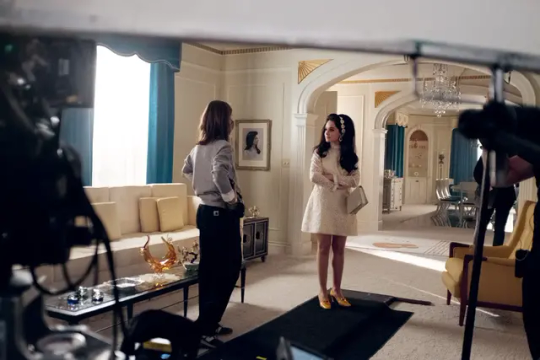
When conceiving a film about Priscilla Presley’s unhappy marriage to Elvis, Coppola says, “I just thought about her sitting on that shag carpet all day.”Photograph by Kate Cunningham / Courtesy MACK
Coppola led me down a hallway to a room where the film’s costume designer, Stacey Battat, was floofing out Priscilla’s wedding gown, which Coppola had asked the fashion house Chanel to design for the movie as a favor. The dress, with a high-necked lacy bib, closely resembles the original, but among Coppola’s assets as a filmmaker is a preternatural aesthetic assurance, even when it comes to taking liberties with her source material. “I’ve always known what I like,” she told me. The opening shot of the film is a closeup of Priscilla’s feet stepping across a fuzzy expanse of shag carpet, which she made a rosy hue, though in the real Graceland there was no such rug. “In my mind, it was pink,” she told me. She hadn’t visited Graceland to prepare for the film, but a friend had taken a tour and had sent her a picture of poodle-print wallpaper. Coppola decided to re-create it for a shot in which Priscilla languishes in the tub, waiting for Elvis to return.
“It probably wasn’t in a bathroom in Graceland,” Coppola said. “But whatever.”
The lighting on set was dim. A playlist of songs, selected daily by Coppola to “set a vibe,” played over the sound system—Curtis Mayfield, Aretha Franklin, and the French indie-rock band Phoenix, which is fronted by Coppola’s husband, Thomas Mars, who is also a music supervisor for her films. In one corner, crew members were playing pickleball on a court that Coppola had insisted on installing during the first week of shooting. She had played in the crew’s tournament, and her team, the Smashers, won. “Pickleball paddles are so ugly,” she commented. “Maybe I’ll design a new line of them.”
Coppola told me that she learned from her father how to create “a warm set,” and borrowed from him a ritual he picked up in drama school: to kick off every production, stand with the cast and crew in a circle, hold hands, and recite the nonsense word “puwaba” three times. But the elder Coppola has what Eleanor, who has been married to him for sixty years, described to me as “an Italian approach—very theatrical, throwing stuff up in the air and screaming.” Sofia said that she finds such flourishes “so unnecessary.” The protagonists in her films tend to observe more than they speak, and Sofia comports herself in much the same way. The people who’ve worked with her, however, describe an impressive resolve beneath the diffidence. The actress Elle Fanning, who starred in “Somewhere” and “The Beguiled,” told me, “She doesn’t freak out, ever. She’s not going to scream at you across the room. But she’s unwavering.” Bill Murray, a star of “Lost in Translation” and “On the Rocks,” gave Coppola the nickname “the velvet hammer,” for her subtle stubbornness about getting her way.
Henley, the producer, who was sitting in a director’s chair near a video monitor, recalled a day when he and Coppola were scouting ice rinks for “Somewhere.” Coppola said of one, “This is great—um, where should we have lunch?” Afterward, Henley mentioned a few more possible rinks to visit, and Coppola looked puzzled; she’d already chosen. Henley told me, “I wasn’t able to read her softness as well as I can now.”
Coppola and her team were rehearsing a scene in the Presleys’ bedroom, where a large mirror hung behind the bed. Jacob Elordi, the actor playing Elvis, took his place on the King-size mattress, his six-foot-five frame nearly dangling over the edge. Spaeny, who was twenty-four but petite enough to pass for a teen-ager, hovered in the doorframe. The scene takes place shortly after Priscilla’s arrival at Graceland. She has gone shopping and bought a dress, but returns it after Elvis deems it unflattering. “Once again I’d compromised my own taste,” Presley writes of that moment in the memoir, which in Coppola’s world is the worst kind of fate.
Kathleen Turner told me, of working with Coppola on “The Virgin Suicides,” “She would never tell an actor what she wanted specifically, and, boy, that can be very tough.” She added, “Francis is a bulldozer, a very good bulldozer who knows what he wants. Sofia lets you do, and then lets you know if that’s what she wanted.” Elordi, who is twenty-six, told me he interpreted Coppola’s lack of instruction as a sign of trust. She cast him after meeting him just once. “Sofia never checked in before we were filming. She never texted or called about the voice or the look or the walk,” he said. When he arrived on set, excited to show Coppola the Elvis accent he’d been working on for months, she said, “Wow, you really look and talk like him,” and left it at that.
Coppola called, “Action!,” and Elordi looked at Spaeny: “What is that dress? It does nothin’ for your figure.” He glanced toward Coppola, who was standing with her cinematographer. “Was that all right, Sofia?” he drawled, remaining in character. “Should I be laughing at her? I don’t want to be too dramatic.”
“It was not too much,” Coppola replied. She paused and placed her hand on her chin. “It might have been a little Elvis-y.”
Francis’s life as a director was peripatetic, and he did not believe in leaving his family behind for more than ten days at a time. So the rest of the nuclear unit—Eleanor, Sofia, and her brothers, Roman and Gian-Carlo, or Gio—lived away from their home in Northern California for months, and sometimes years. One of Sofia’s first memories is of riding in a helicopter in the Philippines during the filming of “Apocalypse Now.” During the making of “One from the Heart,” when she was in the fourth and fifth grade, they relocated to L.A. After that, for “The Outsiders” and “Rumble Fish,” they went to Tulsa, Oklahoma. “We were circus people, basically,” she said. “I kind of mark my childhood by the movies.”
Coppola never excelled academically, in part because of all the moving around. She left one school before learning multiplication, and by the time she enrolled in a new one she’d missed the same unit. Coppola recalled, “I never really learned math, and I’m what they call a ‘challenged’ reader.” Anahid Nazarian, a researcher and producer who has worked with Francis for forty years, remembers a time when Coppola didn’t turn in a paper: “Her teacher said she had the best excuse, which was ‘I left it on the plane coming back from the Oscars.’ ” On matters of taste, though, Coppola was precociously fluent. She gave herself the nickname Domino and insisted that she be credited as such in several of her father’s pictures. While on the set of “One from the Heart,” she created her own publication, The Dingbat News, to distribute among the cast and crew. She collected photography and decorated her walls with pictures from foreign magazines. “I was the only girl in Napa Valley with a subscription to French Vogue,” she said. Francis described her as having “very, very big opinions” even as a little girl, adding, “It was never difficult to know what she preferred and what she didn’t prefer.” Francis’s best-known films took place in hypermasculine precincts—the Army, the Mob. Coppola was drawn to high-femme self-expression. At her parents’ dinner parties, she was always more interested in the “wives and girlfriends,” she said. “They had the best Bakelite jewelry.”
Francis recalled that he and Eleanor maintained a home base outside of Hollywood to create a semblance of normality for the kids. Nonetheless, many of the stories Coppola told me about her childhood took place in the world of famous adults: Richard Gere, a star of Francis’s “The Cotton Club,” swam in the family’s pool; George Lucas was “Uncle George”; Anjelica Huston assured Coppola that she would grow into her nose. One afternoon last year, during a visit to an L.A. bookstore, Coppola showed me a volume called “Height of Fashion,” a collection of notable people’s most stylish snapshots. Coppola had submitted a picture of herself at fourteen—gawky and beaming, with an asymmetrical haircut—sitting at the tony Parisian restaurant Davé next to the late fashion designer Yves Saint Laurent. “He was a friend of a friend of my parents,” she said.

“Marie Antoinette” sharply divided critics. Some dismissed it as an ahistorical powder puff. Others thought it was a masterpiece.Photograph by Andrew Durham / Courtesy MACK
There is an old-world flavor to the Coppolas’ relationship to the family business: just as cobblers beget cobblers, movie people beget movie people. Roman, Sofia’s brother and frequent collaborator, is a filmmaker and has written screenplays with Wes Anderson. Talia Shire, who starred in the “Godfather” movies and the “Rocky” franchise, is her aunt. Her niece Gia has directed two features. Her first cousins include the actors Jason Schwartzman, whom she cast as a dweeby Louis XVI in “Marie Antoinette,” and Nicolas Cage. Other Coppolas coach actors, write screenplays, make music, and produce or distribute films. Sofia ascribes the field’s popularity within the family to Francis’s contagious passion. “My father is just so into filmmaking that he thinks everyone should be doing it,” she said. Even Francis’s father, a composer, ended up working on scores for his films, winning an Oscar (with Nino Rota) for “The Godfather: Part II.”
One member of the family who struggled to find her way in the business was Eleanor. In “Notes,” the first of two memoirs she has written, she described meeting Francis on the set of his début feature, the horror film “Dementia 13,” in 1962. He was the director, she was the assistant art director, and she thought that they might work on films together for years to come. Instead, within a few months she found out she was pregnant with Gio. She and Francis were married the following weekend, and Francis, as Eleanor put it to me, “made it very clear that my role was to be the wife and the mother.” She writes in “Notes” of a feeling of living in waiting—“waiting for Francis to get a chance to direct . . . waiting to go on location, waiting to go home.” (“At that point, I didn’t even know I could have a career, much less whether my wife would,” Francis said, by e-mail, adding, “I knew she was creative and from day one I always provided full time childcare and a studio for Ellie’s artwork.”) Sofia described a time when her mother visited the set of “Priscilla” and observed a scene in which Elvis is preparing to go on tour, while Priscilla will stay with their daughter, Lisa Marie. Eleanor told her, “I’ve been there.” Eleanor recalled to me, “When Elvis said to Priscilla, ‘You have everything you need to be happy,’ that’s exactly what I was feeling at the time. I went to the psychiatrist and said, ‘Why am I unhappy?’ Not one single person said to me, ‘You are a creative person.’ ”
With his daughter, however, Francis made a point of offering creative encouragement, including by exposing her, along with her brothers, to the technical aspects of filmmaking. “There’s a traditional Italian thing with women, but I wasn’t raised like that,” Coppola said. “I was raised the same as the boys.” She and her mother didn’t discuss the gap in their experiences at the time, and Coppola isn’t inclined to analyze the themes that she explores in her work. Roman told me, “I’ve never heard Sofia say, ‘I want to show this isolation through this thing.’ ” Francis has always advised her that filmmaking should be close to the bone—as he told me, “the more personal, the better.” But, when I asked about the personal element of her movies, Coppola often fell back on abstractions or let her sentences trail off mid-thought. (Other writers have speculated about whether her style of communication is cannily evasive or simply a natural product of valuing the visual over the verbal. “I think sometimes she gives people enough rope to hang themselves with just by not responding,” Fiona Handyside, a British film scholar and the author of “Sofia Coppola: Cinema of Girlhood,” has said.) When I told Coppola about the feelings of stuckness that Eleanor had shared with me, and that seemed to percolate through Coppola’s films, she said, “I think so many people can relate to that, especially women.” Then she added, of her mom, “I’m sure seeing my first impression of womanhood as a woman who felt trapped, and her sadness, is related to the women in my films, more than to a side of myself.”
One morning last July, I met Coppola in the lobby of the Ritz Paris, where she was staying before a meeting about an upcoming line of garments she’d designed for the Scottish knitwear brand Barrie, which is owned by Chanel. (She told me that her dad, who has earned much of his fortune through wine and hotels, “taught us how to make money doing other things, so that you don’t have to count on the movies for that.”) Coppola and Mars spend part of the year in Paris, and she could have just stayed in her apartment across town. But the Ritz was closer to Barrie’s offices, near the Place Vendôme, and she relished the opportunity to hole up there by herself. “Lost in Translation” and “Somewhere” portray hotels as sites of both listless suspension and electric potential. “I love an in-between place,” she said.
When Coppola was fifteen, in 1986, Francis arranged a summer internship for her at Chanel. A month before she was supposed to leave for Paris, Gio, her oldest brother, was killed in an accident. He was twenty-two and had been assisting his father on the film “Gardens of Stone,” set at Arlington Cemetery, and on a day off had gone boating with one of the film’s co-stars, Griffin O’Neal. While driving between two other boats, O’Neal drove into a towline that struck Gio. (O’Neal was replaced in the film and later charged with manslaughter, but was ultimately acquitted.) Francis’s producers offered to shut down the film shoot, but he wanted to press on. In her memoirs, Eleanor recalls his hope that keeping busy “would prevent the torturous reality of Gio’s loss from pervading every moment.” Roman, then a film student at N.Y.U., cancelled his summer plans to step into Gio’s job on the film, but Coppola’s parents decided that she should still go abroad. Eleanor told me, “She was right at that age where she was trying to pull away from me, and so I thought she needed to get away from home, and all the things that surrounded the aftermath, and, frankly, me as a mom.”
There is an old-world flavor to the Coppolas’ relationship to the family business: just as cobblers beget cobblers, movie people beget movie people. Roman, Sofia’s brother and frequent collaborator, is a filmmaker and has written screenplays with Wes Anderson. Talia Shire, who starred in the “Godfather” movies and the “Rocky” franchise, is her aunt. Her niece Gia has directed two features. Her first cousins include the actors Jason Schwartzman, whom she cast as a dweeby Louis XVI in “Marie Antoinette,” and Nicolas Cage. Other Coppolas coach actors, write screenplays, make music, and produce or distribute films. Sofia ascribes the field’s popularity within the family to Francis’s contagious passion. “My father is just so into filmmaking that he thinks everyone should be doing it,” she said. Even Francis’s father, a composer, ended up working on scores for his films, winning an Oscar (with Nino Rota) for “The Godfather: Part II.”
One member of the family who struggled to find her way in the business was Eleanor. In “Notes,” the first of two memoirs she has written, she described meeting Francis on the set of his début feature, the horror film “Dementia 13,” in 1962. He was the director, she was the assistant art director, and she thought that they might work on films together for years to come. Instead, within a few months she found out she was pregnant with Gio. She and Francis were married the following weekend, and Francis, as Eleanor put it to me, “made it very clear that my role was to be the wife and the mother.” She writes in “Notes” of a feeling of living in waiting—“waiting for Francis to get a chance to direct . . . waiting to go on location, waiting to go home.” (“At that point, I didn’t even know I could have a career, much less whether my wife would,” Francis said, by e-mail, adding, “I knew she was creative and from day one I always provided full time childcare and a studio for Ellie’s artwork.”) Sofia described a time when her mother visited the set of “Priscilla” and observed a scene in which Elvis is preparing to go on tour, while Priscilla will stay with their daughter, Lisa Marie. Eleanor told her, “I’ve been there.” Eleanor recalled to me, “When Elvis said to Priscilla, ‘You have everything you need to be happy,’ that’s exactly what I was feeling at the time. I went to the psychiatrist and said, ‘Why am I unhappy?’ Not one single person said to me, ‘You are a creative person.’ ”
With his daughter, however, Francis made a point of offering creative encouragement, including by exposing her, along with her brothers, to the technical aspects of filmmaking. “There’s a traditional Italian thing with women, but I wasn’t raised like that,” Coppola said. “I was raised the same as the boys.” She and her mother didn’t discuss the gap in their experiences at the time, and Coppola isn’t inclined to analyze the themes that she explores in her work. Roman told me, “I’ve never heard Sofia say, ‘I want to show this isolation through this thing.’ ” Francis has always advised her that filmmaking should be close to the bone—as he told me, “the more personal, the better.” But, when I asked about the personal element of her movies, Coppola often fell back on abstractions or let her sentences trail off mid-thought. (Other writers have speculated about whether her style of communication is cannily evasive or simply a natural product of valuing the visual over the verbal. “I think sometimes she gives people enough rope to hang themselves with just by not responding,” Fiona Handyside, a British film scholar and the author of “Sofia Coppola: Cinema of Girlhood,” has said.) When I told Coppola about the feelings of stuckness that Eleanor had shared with me, and that seemed to percolate through Coppola’s films, she said, “I think so many people can relate to that, especially women.” Then she added, of her mom, “I’m sure seeing my first impression of womanhood as a woman who felt trapped, and her sadness, is related to the women in my films, more than to a side of myself.”
One morning last July, I met Coppola in the lobby of the Ritz Paris, where she was staying before a meeting about an upcoming line of garments she’d designed for the Scottish knitwear brand Barrie, which is owned by Chanel. (She told me that her dad, who has earned much of his fortune through wine and hotels, “taught us how to make money doing other things, so that you don’t have to count on the movies for that.”) Coppola and Mars spend part of the year in Paris, and she could have just stayed in her apartment across town. But the Ritz was closer to Barrie’s offices, near the Place Vendôme, and she relished the opportunity to hole up there by herself. “Lost in Translation” and “Somewhere” portray hotels as sites of both listless suspension and electric potential. “I love an in-between place,” she said.
When Coppola was fifteen, in 1986, Francis arranged a summer internship for her at Chanel. A month before she was supposed to leave for Paris, Gio, her oldest brother, was killed in an accident. He was twenty-two and had been assisting his father on the film “Gardens of Stone,” set at Arlington Cemetery, and on a day off had gone boating with one of the film’s co-stars, Griffin O’Neal. While driving between two other boats, O’Neal drove into a towline that struck Gio. (O’Neal was replaced in the film and later charged with manslaughter, but was ultimately acquitted.) Francis’s producers offered to shut down the film shoot, but he wanted to press on. In her memoirs, Eleanor recalls his hope that keeping busy “would prevent the torturous reality of Gio’s loss from pervading every moment.” Roman, then a film student at N.Y.U., cancelled his summer plans to step into Gio’s job on the film, but Coppola’s parents decided that she should still go abroad. Eleanor told me, “She was right at that age where she was trying to pull away from me, and so I thought she needed to get away from home, and all the things that surrounded the aftermath, and, frankly, me as a mom.”

Coppola’s book “Archive” includes behind-the-scenes photos from her films, including this one of her with her first daughter, Romy, on the set of “Somewhere.”Photograph by Andrew Durham / Courtesy MACK
When the film came out, Eleanor’s fears proved founded. In 1991, Coppola won two Razzie awards, for Worst Supporting Actress and Worst New Star. Entertainment Weekly ran a cover story with the teaser line “Is she terrific, or so terrible she wrecked her dad’s new epic?” Whatever one thought of Coppola’s performance (Pauline Kael appreciated her “unusual presence”), the fracas lent a metatextual poignancy to Coppola’s final moment in the film, when, just before she crumples on the theatre steps, Mary looks at Michael and utters a disbelieving “Dad?” Francis later admitted to the Times, “The daughter took the bullet for Michael Corleone—my daughter took the bullet for me.” Sofia absorbed the bad press with characteristic sangfroid. “It was embarrassing to be so publicly criticized for ruining my dad’s movie,” she said, but “I wasn’t devastated, because acting wasn’t my dream.” She went on, “I think that the experience helped me as a director. I know how vulnerable it feels to be in front of a camera.” Kirsten Dunst, who starred in “The Virgin Suicides” at the age of sixteen, and later in “Marie Antoinette” and “The Beguiled,” recalled, of first working with Coppola, “I remember her telling me how much she loved my teeth. I thought I had crooked teeth, but she was, like, ‘They are so cute.’ She gave me confidence about things I didn’t necessarily have, and I’ve carried that with me.”
In the following years, Coppola had the kind of aimless early adulthood particular to the offspring of the Hollywood élite. She enrolled in ArtCenter College of Design to study oil painting but dropped out after a teacher told her she was “no painter.” She audited a course with the photographer Paul Jasmin, whom Coppola cites as “the first person outside my family who told me I had any taste.” She became something of an L.A. It Girl, making cameos in music videos and being featured in newspaper style sections. In interviews, she made blithe pronouncements. (Likes: Karl Lagerfeld, hot rods. Dislikes: bras, Twelve Steppers.) At twenty-three, she bought herself a black Cadillac Seville and dubbed it her “Mafia princess car.” She spent a lot of time floating around the pool at the Chateau Marmont, making use of her private key. In 1994, she launched a fashion line called Milkfed, which produced ironic items like a baby tee printed with the phrase “I ♥ Booze.” That same year, she and her friend Zoe Cassavetes, the daughter of the director John Cassavetes and the actress Gena Rowlands, hosted a Comedy Central series called “Hi Octane.” (When I asked Coppola if she has any friends who don’t have celebrities for parents, she said, somewhat vaguely, “It’s definitely not, like, a through line with all of my friendships,” but acknowledged a special affinity for others who have “big macho powerful artist dads.”) The series, in which the pair undertook stunty adventures and interviewed their famous acquaintances, was cancelled after a few episodes. Francis recalled that Sofia once asked him, “Dad, am I going to be a dilettante forever?”
A breakthrough came when Coppola wrote a short film, called “Lick the Star,” about a clique of teen-age girls who revere, and then violently ostracize, their queen bee. Her cast featured some of her father’s associates, including Peter Bogdanovich as a school principal. The finished film, released in 1998, runs only thirteen minutes and is shot in black-and-white, but it contains the seeds of Coppola’s lush cinematic vocabulary. She told me, “I knew a little bit about photography, a little bit about clothing design, and a little bit about music. I was annoyed that I could never pick one thing. And then, when I made my short film, I realized it was a way to work with all of it.”
In New York, Coppola lives with Mars and their two teen-age daughters in a red brick town house whose narrow façade makes it look deceptively humble from the outside. One morning last March, she met me at the entranceway with the family’s golden retriever, Gnocchi, and guided me into a wide, white-walled living room. Coppola’s home décor, like her fashion sense, is classic with a whimsical feminine touch. The mantel over a gray marble fireplace held a large porcelain chinoiserie vase filled with an architectural array of pink roses and anemones. (They were high-end fakes.) A floor-to-ceiling bookcase was organized into sections on fashion, New York, photography, and French history. In between books she had wedged framed art works, including a drawing made by the director Mike Mills for the poster of “The Virgin Suicides” and a Polaroid of Princess Caroline of Hanover taken by Andy Warhol.
Coppola told me that her least favorite film to make was “The Bling Ring,” her fifth feature, because the world in which it’s set was out of synch with her own sense of taste. The movie—based on the true story of a group of L.A. high schoolers who robbed the homes of the rich and famous—was shot partly inside Paris Hilton’s mansion, where the camera gawks at throw pillows emblazoned with images of Hilton’s face and a “night-club room” equipped with a dancer’s pole. The film is a note-perfect millennial period piece, channelling the haywire intersection of celebrity worship and consumerism at the dawn of social media. But Coppola said, of its milieu of Ugg-boot-wearing teens and the reality stars they worship, “I wouldn’t call it hideous—that sounds snobby—but a big part of my motivation is making beauty.” To her chagrin, “The Bling Ring” is her daughters’ favorite among her movies. “They think it’s really glamorous and cool,” she said, then added, with a shudder, “They’ve started asking me for boot-cut jeans.”
She did not show me the girls’ bedrooms, but she later told me that she’s begun photographing their messes for posterity. “It’s like set dressing for one of my movies,” she said. The girls are forbidden to have public social-media accounts until they’re eighteen, but Romy, the older child, had a rogue viral moment last year, when—sounding, many observers noted, a bit like one of Coppola’s restless protagonists—she posted a plucky TikTok video saying that she’d been grounded for attempting to charter a helicopter with her dad’s credit card “because I wanted to have dinner with my camp friend.” Coppola, who values privacy and the mystery it can afford, called the video “the best way to rebel against me.” (She seemed excited, though, to confirm that Romy had filmed a small speaking role in Francis’s upcoming movie.)

Coppola considers “Lost in Translation,” her second film, to be her most personal.Photograph courtesy Sofia Coppola / Courtesy MACK
Coppola had set out scalloped shortbread cookies on a dainty plate (“I love Italian fancy-lady dishes”) and a floppy stack of paper, the manuscript of a coffee-table book, “Sofia Coppola Archive,” which she released last fall. The finished volume, as thick and pink as a slice of princess cake, is a scrapbook of Coppola’s career, with short, elliptical introductions to each film followed by a cascade of Polaroids, hand-written notes, contact sheets, script marginalia, costume sketches, and other ephemera.
The first chapter opens with a behind-the-scenes image of Dunst smiling in the grass of a football field. Coppola was in her early twenties when she read Jeffrey Eugenides’s novel “The Virgin Suicides,” from 1993, about five adolescent sisters in nineteen-seventies Michigan, who languish under the strictures of their ultraconservative parents and all die by suicide in a single year. Coppola said that when she read the book she thought, I hope whoever makes this into a movie doesn’t ruin it. Then she realized that maybe she could be the one to do it.
Coppola had started writing the script before she learned that a pair of producers had already bought the rights to the book and were working with a male writer-director. “I could hear my dad saying, ‘Don’t ever try to adapt something you don’t have the rights to,’ ” she recalled. “He told me to move on to something else.” Instead, Coppola sent her script to the producers and asked them to consider her for the directing job should the current arrangement fall through. A year later, she got the call. “I was young and naïve and didn’t really know what I was getting into,” she told me, “but I was, like, ‘Shit, O.K., now I have to figure it out.’ ”
“Virgin,” filmed over a month in the summer of 1998, for a budget of four million dollars, was a remarkably assured début, from its opening shot: Dunst lingering on the hot street eating a cherry Popsicle, like a latter-day Lolita, as the synthy sounds of the band Air kick in. From there the film unfolds at an unhurried pace. The sisters’ sadness is scarcely externalized, but the creeping ooze of their despair pervades every frame, including a striking shot of a wooden crucifix with a pink lacy bra slung across it to dry. Eugenides formulated the story as a hazy memory, narrated by a chorus of neighborhood boys who idolize the sisters but know nothing of their inner lives. Coppola’s script used a single narrator and allowed the camera to peek into the private spaces where the boys could never go. “Archive” reproduces an e-mail she received from Eugenides in 1998, expressing concerns that the script lacked “the necessary support around that story, which of course means the boys, the passage of time, the disjunctive narrative, and the right tone.” (She also includes a recent message that Eugenides wrote in response to her request to print the letter, in which he says, “What a whiny little bitch I was in those days.”) The film premièred at the Sundance Film Festival to critical acclaim, but, according to Coppola, her American distributor, Paramount Classics, did little to promote it. “They thought teen-age girls were going to kill themselves if they saw it,” she said, adding, “It barely came out here.”
Coppola told me that every film she makes is a reaction to the one before. After “Virgin,” she wanted to work from an original story. She considers “Lost in Translation,” her next film, to be her most personal. She chose Japan as its setting based on trips she’d taken to promote her Milkfed line, and came up with the story of a twentysomething American woman, Charlotte, who bonds with a famous older actor named Bob at the Park Hyatt Tokyo. She wrote the script with Bill Murray in mind as Bob, then spent a year trying to track him down. (The actress Rashida Jones, a friend and collaborator of Coppola’s, recalled, “She had an assistant whose job it was to hold her phone and tell her if Bill Murray called.”) Charlotte, played by Scarlett Johansson, is smart but lacking direction. She tells Bob, “I tried taking pictures, but they’re so mediocre.” She is married to a hot-shot music photographer (Giovanni Ribisi), and she sits bored at the hotel bar as he schmoozes with Hollywood types.
At the time, Coppola was married to the director Spike Jonze, whom she’d met in the early nineties through her friends Kim Gordon and Thurston Moore, of the band Sonic Youth. But the two were in the process of separating. Jonze released his own feature directorial début, “Being John Malkovich,” the same year that “The Virgin Suicides” premièred, and while Coppola’s film had a modest return his became an indie sensation. She recalled feeling, in their relationship, an echo of her mother’s experiences. Jonze and a few of his friends had discussed launching a directors’ collective, and, according to Coppola, they didn’t even invite her to join. “I don’t want to embarrass Spike and those guys,” she said. “I think it’s just about understanding the dynamic there, which was a very nineties, dudes’-club dynamic. I was going around with Spike to promote his films, and I was just kind of the wife.” (Jonze could not be reached for comment.)
She was surprised when “Lost in Translation” became a runaway hit, not only winning her an Oscar but earning more than a hundred million dollars worldwide on a four-million-dollar budget. “I thought I was writing this really indulgent piece,” she recalled. “I mean, who cares about some rich girl trying to find herself?” But audiences connected to the film’s fuzzed-out mood of dislocation and the tragicomic pleasures of two lost people finding each other for a moment in time. At the end of the film, Bob and Charlotte share a kiss, and he whispers something inaudible into her ear. “I never even wrote that line,” Coppola said. “Bill always said that it was something that should stay between them.”
There is an adage in Hollywood that actors want to win awards to boost their egos, whereas directors want to win awards to boost their budgets. After “Lost in Translation,” Coppola found herself courted by the major studios. The producer Amy Pascal, who was a top executive at Sony Pictures at the time, told me, “I was desperate to work with her.” When they met, in 2004, she asked Coppola what project she dreamed of making. Coppola answered immediately: “Marie Antoinette.”
Not long after the release of “The Virgin Suicides,” Coppola had read an advance copy of a biography of the French queen, by the British historian Antonia Fraser, and had written to Fraser asking to option it. “I know I will be able to express how a girl experiences the grandeur of a palace, the clothes, parties, rivals, and ultimately having to grow up,” she wrote. “I can identify with her role of coming from a strong family and fighting for her own identity.” At first, Coppola endeavored to make her script biographically comprehensive, covering Marie Antoinette’s life all the way up to the guillotine. Fraser, writing later in Vanity Fair, recalled telling Coppola that the script seemed to lose energy in its final act, as if Coppola had been uninterested in “the mature woman’s tragic fate.” Fraser went on, “When she asked me lightly, ‘Would it matter if I leave out the politics?,’ I replied with absolute honesty, ‘Marie Antoinette would have adored that.’ ”
Coppola’s film, released in 2006, tells the story of the profligate, unfeeling monarch from the history textbooks as an intimate coming of age, following her from the time she was shipped to Versailles from her home in Austria as a fourteen-year-old peace offering between nations to her departure from the palace, nineteen years later, as the French Revolution set in. Coppola told me that she wanted to capture the idea of “the kids taking over the kingdom.” She allowed Dunst to retain her American accent and filled the film with anachronistic music and energetic montages, including a feverish shopping scene set to a remix of “I Want Candy.” (Roman, her brother, who shot most of the film’s closeups, planted a pair of Converse sneakers among the rococo mules.) When an angry mob grumbles about the queen’s infamous (and likely apocryphal) line “Let them eat cake,” Dunst tells her girlfriends, “That’s such nonsense, I would never say that!” The movie is almost obscenely beautiful; every shot has the composed lusciousness of a box of petits fours. The bracing opening sequence—Coppola has never missed on an opening shot—was inspired by a Guy Bourdin photograph of a model in repose: lounging in a petticoat, with an attendant massaging her feet, Dunst’s Marie swipes her finger through the frosting of a layer cake and then delivers the camera an insolent stare. When Coppola showed her father an early cut of the film, he advised her to give Louis XVI more lines. Like Eugenides, he was missing the male perspective. “I was, like, ‘Um, Dad, no,’ ” Coppola remembered, adding, “I honestly don’t care about anyone else’s point of view. Just hers.”
Coppola and Mars began dating during the film’s making. Mars, who was born and raised in the town of Versailles, recalled, “It’s like living in a museum. You can’t disturb anything. It’s not welcome.” With “Marie,” there was excitement in seeing Versailles “embrace something new.” But not all French people appreciated the result. At a press screening at Cannes, some viewers booed. Many critics dismissed the movie as an ahistorical powder puff, an impudent exercise in vibes-first filmmaking. Others thought it was a masterpiece. The response was so divided that the Times made an unorthodox decision to publish duelling reviews from its two chief movie critics. Manohla Dargis, in the “anti” camp, wrote, “The princess lived in a bubble, and it’s from inside that bubble Ms. Coppola tells her story.” For some, though, the film’s reception only reinforced Coppola’s claim to its thematic substance, as a woman who knows a thing or two about the distorting effects of public exposure. (One of her close friends, the fashion designer Marc Jacobs, told me, “It’s so easy to throw around these titles like ‘nepo baby.’ What do you do, kill yourself because you come from a good family? Do you just not make art?”) Roger Ebert saw the movie’s slim perspective as a strength: “Every criticism I have read of this film would alter its fragile magic and reduce its romantic and tragic poignancy to the level of an instructional film.”
How one feels about Coppola’s narrow approach to storytelling might depend, in part, on where one stands in relation to her field of vision. When “Lost in Translation” came out, some Asian and Asian American critics took issue with the film’s depiction of Japanese culture through the eyes of Western visitors. Accented English was played in the movie for laughs. Tokyo establishments were portrayed as “superficial, inappropriately erotic, or unintelligible,” as Homay King, a film-studies professor at Bryn Mawr, wrote in Film Quarterly. King wondered what level of awareness Coppola had brought to this portrayal: Did the tone of bewildered Orientalism belong to her characters or to her? Coppola defended her depiction to the Los Angeles Times by saying, “My story is about Americans in Tokyo. After all, that’s all I know.” But she didn’t seem to reckon with the inherent sensitivities of depicting another culture from a distance. “I did wonder if all the ‘r’ and ‘l’ switching would be offensive,” she said back then. “But my crew thought it was funny.” (“It was a different time,” she told me. “I haven’t thought about how I would approach it now, but probably not in the same way.”)

“My father is just so into filmmaking that he thinks everyone should be doing it,” Coppola says.Photograph by Thea Traff for The New Yorker
Coppola confronted a similar backlash more recently, to a movie set on American soil. “The Beguiled,” from 2017, is a remake of a 1971 movie that takes place during the Civil War, about a group of white Confederate women who are driven into an erotic fervor when a wounded Union soldier arrives at their boarding school in an isolated mansion. Both the original film and the novel on which it is based also feature an enslaved Black woman who works in the house. Coppola, fearful of perpetuating stereotypes, decided to omit the character altogether, and explained away the absence with dialogue at the beginning of the film: it was nearing the end of the war, and “the slaves left.” In the U.S., the release was dominated by discourse about the character’s erasure; at Slate, the writer Corey Atad lambasted the film for its “whitewashing of slavery.”
The fallout forced Coppola to consider that there are hazards to writing only what you know, or “leaving out the politics,” if doing so means waving away inconvenient complexities. The critic Angelica Jade Bastién, of New York and Vulture, told me, “What Coppola does best is also her greatest weakness: she creates fables about modern white femininity.” She went on, “Art is political whether the artist wants it to be or not. Coppola is someone studying whiteness, but who doesn’t perhaps understand her own whiteness very well. It is because of that contradiction that her work doesn’t get deeper.” Coppola told me, “I admit it was probably stupid to do something on the Civil War.” But she also suggested that her “creative license” with the source material had been “misinterpreted as insulting.” She’d been interested in portraying the unravelling of a group of cossetted women when there were no men around or slaves left to tend to them. “It’s the kind of world I like, really claustrophobic,” she said, adding, “They were so used to being taken care of, and they didn’t know how to do anything for themselves.”
During one conversation, Coppola confessed, “Sometimes I feel like I make the same film over and over, and I’m probably becoming a cliché of myself.” In some ways, “Priscilla” resembles her previous movies, but in contrast to a film like “Marie Antoinette,” with its baubles and brocades, the new film is strikingly joyless in its depiction of life inside a gilded cage. In part because Coppola was denied the rights to Elvis’s music, the exuberance of rock and roll is all but absent from the film. Priscilla interacts with Elvis mostly at home, where he’s dressed down, needy, and sporadically abusive. Through the murmurings of tertiary characters, Coppola laces the film with reminders of Priscilla’s tender age, which was troubling even if you believe, as Presley claimed in her book, that she and Elvis did not consummate their relationship until they were married, when she was twenty-one. One of the film’s strongest sequences shows Spaeny trying to occupy herself in Graceland while Elvis is away. She ambles around in a doll-like white dress and too-big matching heels. She tries out various seats in the living room and plunks a single key on Elvis’s baby grand. She is less a kid taking over the kingdom than a child left home alone.
Just as Coppola rarely concerns herself with events beyond her characters’ sequestered worlds, she doesn’t show what happens to the ones who escape the waiting room of their lives. The final shot of “Priscilla” shows Spaeny driving out of the gates of Graceland. We hear Dolly Parton’s “I Will Always Love You,” both mournful and triumphant. Coppola has hinted at a desire to, as she put it in one interview, “grow up and do other subject matter,” beyond adolescence, but she gave me little sense of what that might look like, besides, perhaps, teaming up again with Dunst, who is now in her early forties. Coppola’s past films have romanticized the bonds between famous older men and younger women, but she told me that her attitude about such connections has shifted with the times. Her project before “Priscilla,” “On the Rocks,” from 2020, centered on a fortyish writer, Laura (Rashida Jones, who is the daughter of the music producer Quincy Jones), and her big-time art-dealer dad, Felix (Bill Murray). The character of Felix, whom Coppola said she based on her “dada and his buddies,” is a gregarious man of style, who wears silk scarves and considers caviar a road snack. He is also an attention hog prone to errant flirting and chauvinist soliloquies. “Somewhere” was tinged with nostalgic sweetness about fathers and daughters: Coppola had the film’s protagonists—the divorcé movie star Johnny Marco (Stephen Dorff) and his eleven-year-old, Cleo (Elle Fanning)—order every flavor of gelato from room service, “which is just the sort of thing my dad would do,” and enlisted the Chateau Marmont’s late “singing waiter” Romulo Laki to serenade Cleo with Elvis’s “(Let Me Be Your) Teddy Bear,” the same song that Laki used to sing to Sofia when she was young. “On the Rocks,” by contrast, is both funnier and pricklier, charting Laura’s struggle to define herself outside of her dad’s overwhelming orbit. Drinking a Martini at Bemelmans, Felix tells Laura that he is going deaf to the frequency of female voices. Laura yells at the end of the film, “You have daughters and granddaughters, so you’d better start figuring out how to hear them!”
Eleanor has often shot behind-the-scenes footage on Sofia’s films, as she did for Francis. She has eighty hours from the making of “Marie Antoinette,” which Sofia told me she’s helping turn into a documentary. In 2016, at the age of eighty, Eleanor also released her first feature, a comedy called “Paris Can Wait,” becoming the oldest American woman to make a directorial début. But lately Eleanor has been ill, and the family has been shuttling back and forth to her bedside in California. On Sofia’s birthday last year, which coincided with Mother’s Day, the two “sat in the hospital and ate tuna sandwiches,” Eleanor told me. Last October, “Priscilla” had its American première at the New York Film Festival. The strikes in Hollywood meant that there were almost no actors on the red carpets, but, because “Priscilla” involved no major-studio funding, Coppola was among the few directors given special dispensation to have her film’s stars do promotion. Elordi and Spaeny were at the première, but Coppola herself was missing. Henley, her producer, read a statement in her stead: “I’m so sorry to not be there with you, but I’m with my mother, to whom this film is dedicated.”
One recent evening, hundreds of Coppola fans lined up at a Barnes & Noble in central L.A. for an “Archive” book signing. Coppola is, as her daughters recently informed her, “big on TikTok,” and some Gen Z fans have taken to calling her “Mother,” an influencer to the influencers. (One viral video shows a young woman ranting about cleaning her room: “When a boy’s room is messy, it’s, like, ‘Oh, my God, he’s filthy,’ ” she says, adding, “When a girl’s room is messy? It’s Sofia Coppola.”) At the bookstore, the crowd was largely made up of teen-agers, many of whom had donned costumes: gossamer pink tutus and oversized hair bows that evoked Marie Antoinette’s style; chokers with heart pendants like one Spaeny wears in the “Priscilla” trailer. One wore a vintage T-shirt by Milkfed, Coppola’s fashion line, which she sold years ago but which has, in recent years, become a cult brand among a new generation of fans, including the pop star Olivia Rodrigo.
A young woman wearing a skirt custom-printed with a still from “The Virgin Suicides” reached the front of the line and held her hand to her chest. “You literally invented ‘aesthetic,’ ” she said to Coppola, using slang for the kind of exquisitely curated look that teens strive for on social media. There was an amusing mismatch between the fans’ gushing and Coppola’s low-key energy. She did not say much more than a warm “oh, thank you” or “that’s so sweet” as she received their compliments.
Leaving the bookstore, at dusk, Coppola said that she was looking forward to ordering room service at the Beverly Hills Hotel, whose menu she knew from childhood breakfasts spent talking filmmaking there with her father. (The eggs Benedict is apparently first-rate.) We walked together toward a black car waiting for her at the curb. After the harsh fluorescent lighting in the bookstore, the L.A. streets looked pleasingly subdued. I pointed at the sunset, which was a shade of powdery pink.
“Oh, yeah,” Coppola said, her eyes moving lackadaisically toward the sky. “It’s a little like I directed it.” ♦
An earlier version of this article misstated Jacob Elordi’s height and the year Sofia Coppola and Amy Pascal met.Published in the print edition of the January 29, 2024, issue, with the headline “Crème de la Crème.”
0 notes
Text
FACTS AND STATS: Sargeant becomes the first American top-10 qualifier for 20 years
Zandvoort served up some tricky conditions on Saturday, but even on a damp track that saw plenty of crashes, Max Verstappen couldn’t be stopped. He grabbed his third straight pole on home soil as he continues his quest to equal Sebastian Vettel’s nine consecutive victories. But what else did qualifying highlight? Here are the best facts and stats from the Netherlands…
Max Verstappen has taken pole at every Dutch Grand Prix in his lifetime so far.
The Dutchman grabbed his eighth pole of the year, surpassing his 2022 total.
READ MORE: Verstappen tops dramatic wet-dry Zandvoort qualifying to extend run of Dutch GP poles
Verstappen and Norris share the first row for the Dutch Grand Prix
George Russell was third, for his best starting slot since Australia.
Alex Albon was fourth, tying his career-best start for the fifth time.
This is also the best start for Williams since Russell’s third in Sochi in 2021.
Fernando Alonso has his best qualifying since he started on the front row in Canada, five races ago.
Carlos Sainz has outqualified his team mate for the first time in five races.
Sergio Perez was seventh, meaning he starts outside the top six for the eighth time in 13 races this season.
Oscar Piastri was eighth, his worst qualifying since Austria, the last race before he received McLaren’s upgrade package.
Not to be for Hamilton, who exited in Q2 for the second time this season
Logan Sargeant was the first American to qualify in the top 10 since Michael Andretti at the 1993 Italian Grand Prix.
Williams had two cars in Q3 for the first time since Monza 2017, when Felipe Massa and Lance Stroll managed that feat.
Lewis Hamilton starts 13th, his second Q2 elimination of the season. He also started P13 in Miami.
Pierre Gasly was 12th, in what was his third straight Q2 elimination.
Zhou Guanyu suffered his fifth Q1 exit in the last six races.
READ MORE: ‘It was hit Piastri or hit the wall’ – Ricciardo reflects on hand-breaking incident as ‘excited’ Lawson prepares for F1 race debut
Esteban Ocon qualified 17th, this Q1 elimination following four consecutive Q2 exits.
Kevin Magnussen was out in Q1 for the fourth time in the last five races.
Valtteri Bottas suffered his third Q1 exit of the season.
via Formula 1 News https://www.formula1.com
0 notes
Text
Wednesday, March 01, 2023 Canadian TV Listings (Times Eastern)
WHERE CAN I FIND THOSE PREMIERES?:
THE MANDALORIAN (Disney+Star)
SURVIVOR (Global) 8:00pm
THE NATE & JEREMIAH HOME PROJECT (HGTV Canada) 9:00pm
TRUE LIES (CTV) 10:00pm
THE WINE DOWN WITH MARY J. BLIGE (BET Canada) 10:00pm
NEW TO AMAZON PRIME CANADA/CBC GEM/CRAVE TV/DISNEY + STAR/NETFLIX CANADA:
CBC GEM
BORN TO BE THE KING
DAVID CROSBY: REMEMBER MY NAME
MIDWIVES
ODD SQUAD (Season 1 - Episodes 1-20)
CRAVE TV
MONSTER FAMILY
WOMEN’S HISTORY MONTH COLLECTIONS:
Bechdel Test Approved
Biopics
Celebrating Pride
Docs
Funny Women
Gal Pals
Leading Women
Made By Women
Oscar-Winning, Emerging Voices
Women in Music
Women in Sport
Women Who Kick Butt
DISNEY + STAR
THE MANDALORIAN (Season 3)
STILL MISSING MORGAN (Season 1 - All Episodes Available)
VIRGIN: THE SERIES (Season 1 - All Episodes Available)
WILD CRIME (Season 2 - All Episodes Available)
NETFLIX CANADA
BABY MAMA
CHEAT (Season 1)
COUPLES RETREAT
FAKES (Season 1)
GRAN TORINO
HUNT
THE INTERN
LÉON: THE PROFESSIONAL
LITTLE ANGEL: VOLUME 2
MEN IN BLACK
MEN IN BLACK II
OMERTÀ
PROMISING YOUNG WOMAN
SENSE AND SENSIBILITY
STEPMOM
THE THREESOME
TONIGHT YOU’RE SLEEPING WITH ME
WHEN WE WERE BOYS
WRONG SIDE OF THE TRACKS (Season 2)
MLB BASEBALL (TSN/TSN3) 1:00pm: Nationals vs. Yankees
NBA BASKETBALL
(SN1) 7:00pm: Suns vs. Hornets
(TSN/TSN3/TSN4) 7:00pm: Cavaliers vs. Celtics
(SN Now) 7:30pm: 76ers vs. Heat
(TSN/TSN4) 10:00pm: Pelicans vs. Trail Blazers
NHL HOCKEY
(SN) 8:00pm: Leafs vs. Oilers
(SN1) 10:00pm: Hurricanes vs. Knights
STILL STANDING (CBC) 8:00pm: Wabush, NL: Cain's Quest, one of the longest snowmobile races in the world, turns Wabush from "the middle of nowhere" to the center of it all.
RUN THE BURBS (CBC) 8:30pm: Andrew organizes Rockridge's Lunar New Year festival, and an unwanted guest shows up; Camille starts a curry war.
PRETTY HARD CASES (CBC) 9:00pm: Sam and Kelly set up an elaborate fake informant operation to uncover incriminating evidence in the purple rain case, but the play is derailed when Naz becomes the prime suspect in a murder.
SALVAGE KINGS (History Canada) 9:00pm (SEASON PREMIERE): In the season premiere, Ted takes the plunge with his own new salvage business and hits the ground running at an abandoned wrecking yard that may be holding hidden treasures.
WICKED TUNA (Nat Geo Canada) 9:00pm (SEASON PREMIERE): Bluefin season opens; the fleet battles for the first fish.
THE MACHINERY (Crave) 9:00pm: Olle realizes he can't trust anyone; he manages to find out who is the brains behind the plot against him; Nina finds out who Olle's father is and goes to see him; Olle is running out of options.
LETHAL LOVE (Super Chanel Fuse) 9:00pm: After a business owner starts receiving online threats, doubts and paranoia creep in when she reconnects with a former flame and meets a new client.
FURY (Crave) 9:50pm: Biting the Bullet
THE REPAIR SHOP AUSTRALIA (Makeful) 10:00pm: Majella restores a leather shoe sewing machine; Paul brings an Edison Voice Recorder back from the brink; Britta resurrects a headless rocking horse.
#cdntv#cancon#canadian tv#canadian tv listings#still standing#run the burbs#pretty hard cases#the machinery#fury#mlb baseball#nba basketball#nhl hockey
1 note
·
View note
Text
Newsies as Greek Demigods
yes i know most gods/goddesses are gods/goddesses of more than what i listed but it’s just too much
Tell me if you want to know about someone in specific
ZEUS, king of the gods and god of thunder (cabin 1)
- lmao no
HERA, goddess of marriage (cabin 2)
- ...she doesn’t have any kids
POSEIDON, god of the seas (cabin 3)
- also no sorry
DEMETER, goddess of harvest, agriculture and fertility (cabin 4)
Mush Meyers

- He’s been at camp for 2 years
- He stays all year round
- His dad died trying to protect him from some monsters
- He really misses him
Finch Cortez
- He’s been at camp for a little over a year, and he doesn’t stay all year round
- He was given up at birth and was adopted by two moms which are the best
- We love them
- They know about camp but not that he’s a demigod (they think it’s just a normal summer camp)
- Finch is actually really introverted
ARES, god of war (cabin 5)
Spot Conlon
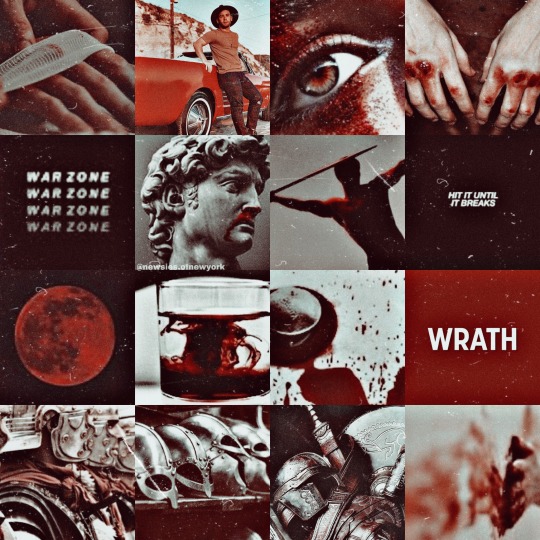
- Cabin 5 counsellor
- Has been in camp for 6 years (since he was 10)
- He stays in camp all year round
- He’s dating Race
- Don’t try to beat him at Swords and Shield. You’re going to lose, it's not worth the embarrassment.
- Has gone on quests before
- Not his favourite thing but then again i don’t think anyone really enjoys them
- I mean he used to but then there was this really bad one so now he doesn't
- He doesn’t like talking about it
Hotshot
- He’s been at camp for 4 years
- He stays on camp all year round
- He had it really bad before coming to camp
- Like,,, REALLY bad
- Someone give him a hug
ATHENA, goddess of wisdom and battle strategy (cabin 6)
Katherine Plumber
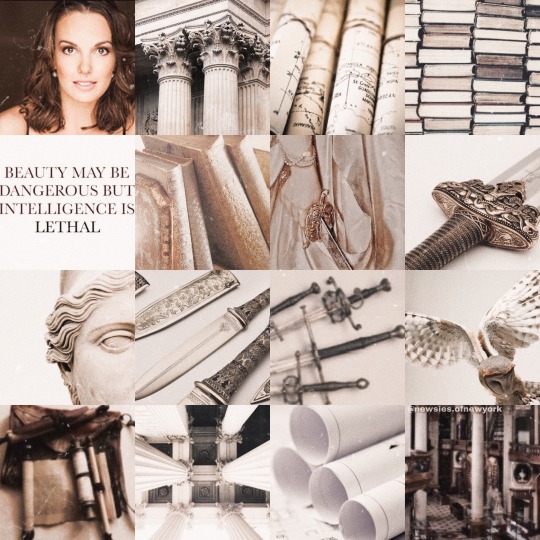
- Cabin 6 counsellor
- She stays all year round because she doesn’t have a good relationship with her dad :/
- She’s been in camp for 3 years
- You’re not winning at capture the flag if you’re against her sorry not sorry
- She was claimed almost as soon as she got to camp
- She’s mad that Athena doesn't trust her with any quests because she knows she can do it (big Annabeth energy)
-Honestly jealous of David when he got his quest
David Jacobs
- He doesn’t stay at camp all year round
- Has been at camp for a year
- Actually kinda hurt when Sarah decided to join the hunters
- He is really bad at capture the flag and it’s sad
- Athena took her sweet time claiming him
- Poor Dave got a quest barely a month after getting to camp
- It didn’t go as planned
- But it wasn’t bad so yeah
- He went with Jack and Sarah
APOLLO, god of music, the sun, archery, prophecy and medicine (cabin 7)
Jack Kelly

- Cabin 7 counsellor
- Has been at camp since he was 9 (he’s 17 now)
- He stays all year round
- He’s v e r y competitive when it comes to capture the flag
- It took Apollo a whole fucking month to claim him
- He’s embarrassed that he’s so bad at archery because he’s a son of apollo and yet he can’t do it right
- He’s loves arts and crafts because he gets to paint and stuff
- Has really bad ptsd from a really bad quest (glances at Snyder)
- But like honestly he’s had it worse than everyone else and really needs a hug
- Give him a hug
- He’s been dating Davey for 3 months
Crutchie Morris
- He came to camp with Jack
- They were in the same foster home
- He was 7
- Really really likes arts and crafts
- Not as much as Jack but still
- He’s soooooo good at singing like omg how
- Plays s o m a n y instruments
- We love him
- He’s so talented it’s not fair
- But he is a son of Apollo so
Elmer
- He’s been at camp for 3 years
- He doesn’t stay all year round
- He lives with his dad, step-mom, and 3 younger siblings
- Has a huge crush on Albert but is too shy to tell him 👉👈
- Plays the violin!
ARTEMIS, goddess of the moon and archery (cabin 8)
Sarah Jacobs

- She decided to join the hunters shortly after her quest with David and Jack
- Her godly parent is Aphrodite (who is Not Happy about this)
HEPHAESTUS, god of blacksmiths, craftsmen, and volcanos (cabin 9)
Jojo de la Guerra
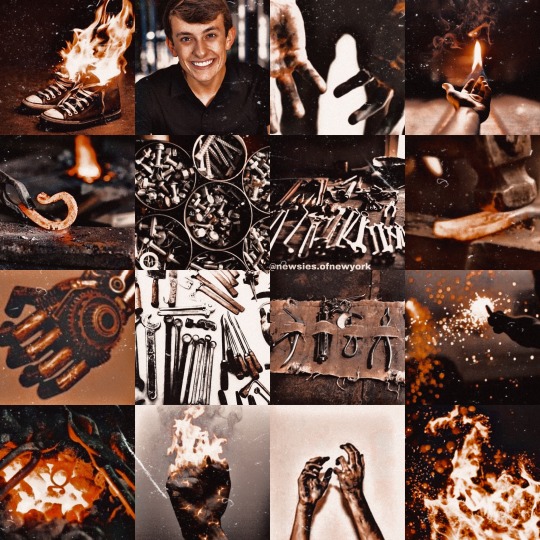
- He’s been at camp for 2 years and he doesn’t stay all year round
- He's dating a guy he met at school (Mike)!!
- The guy isn’t a demigod but shh
- He puts others before him so he ignores his own feelings and problems which isn’t good
- But he’s getting better at saying no to people and taking time for his mental health!
- He’s been on one quest
APHRODITE, goddess of love and beauty (cabin 10)
Racetrack Higgins
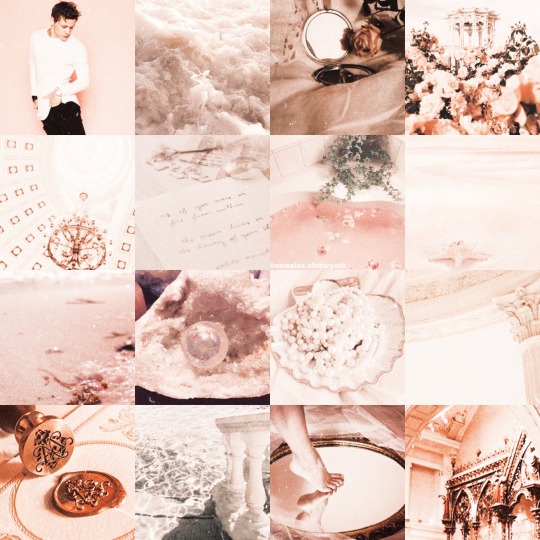
- Cabin 10 counsellor
- Has been in camp for 5 years (since he was 11)
- He used to go back home (er- whatever home the system put him in) for the first 2 years, but now he stays at camp all year round because it’s better than being stuck in the foster system
- He’s a dancer. Idc the AU you can take that hc out of my cold, dead hands.
- When he first came to camp people thought he was going to get claimed by Hermes and were kinda surprised when it was Aphrodite
- He has charmspeak!!
- Yes he does participate in capture the flag who do you think he is
- He’s dating Spot and Aphrodite ships it so hard
- Has flirted with every guy at camp at least once
- People go to him for relationship advice but he genuinely doesn’t know what the fuck he’s doing
- He’s gone on quite a few quests before and he honestly doesn’t like them
- Mostly because there was a really bad one which really fucked him up
- That was his last quest (so far), and it was with Spot. Yes it brought them closer but honestly it wasn’t worth all the shit that happened to both of them on the quest
HERMES, god of thieves, travel messenger of the gods (cabin 11)
Albert Dasilva
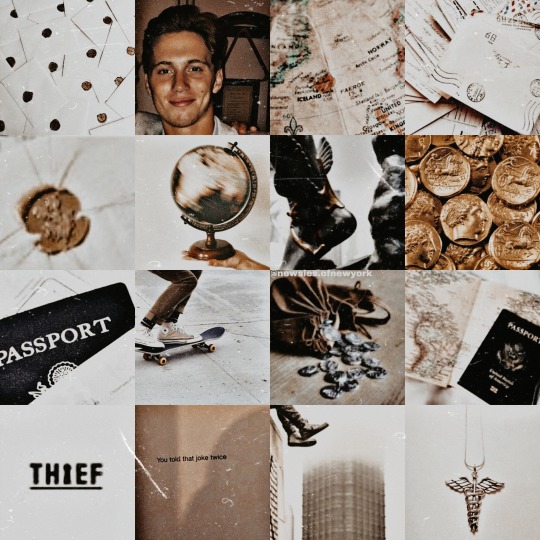
- He doesn’t stay at camp all year round
- He lives with his step-dad who is actually really nice
- He’s been at camp for 4 years
- He got claimed almost immediately
- Great at capture the flag
- Hasn’t been in any quests but really wants to!!
- Wants to ask Elmer out but he doesn’t know how
DIONYSUS, god of wine (cabin 12)
Oscar Delancey
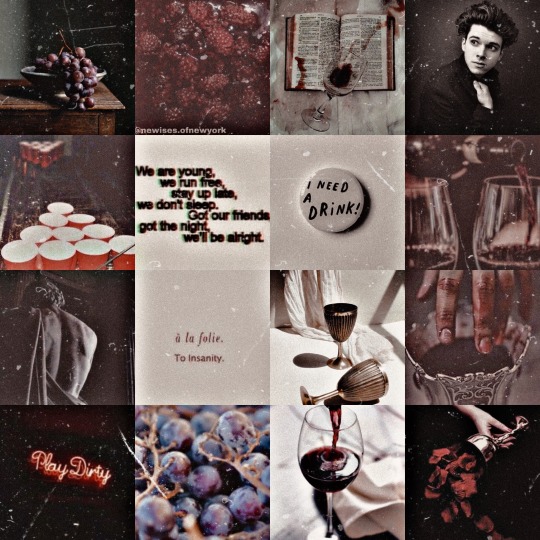
- He’s been at camp for 2 years
- He doesn’t stay all year round and lives with his older brother, Morris (who is 23 years old)
- People think he’s rude and a bully but if you take the time to get to know him you’ll realise he’s actually not that bad
- He’s just really defensive and doesn’t trust easy because before he moved in with his brother he lived with his uncle who was abusive
- Don’t @ me i don’t see the Delanceys as complete bad guys okay
HADES, king of the underworld and god of the dead (cabin 13)
Smalls
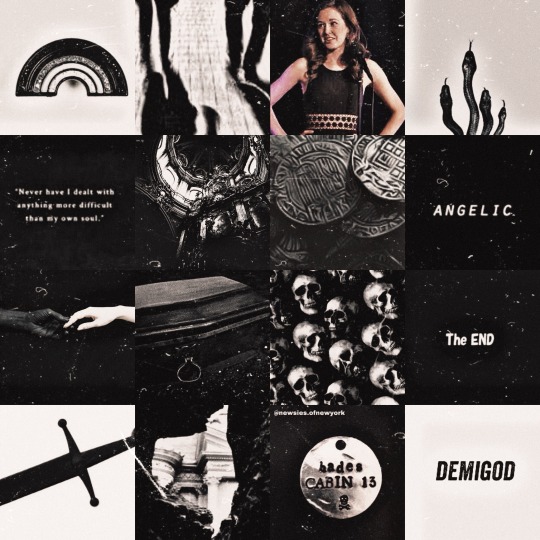
- She's been at camp for 4 years
- She stays all year round
- (jokingly) makes fun of Jack because she’s better at archery than him
#newsies#newsies live#racetrack higgins#jack kelly#spot conlon#crutchie morris#albert dasilva#katherine plumber#david jacobs#davey jacobs#mush meyers#finch cortez#elmer newsies#smalls newsies#oscar delancey#morris delancey#jojo de la guerra#sarah jacobs#hotshot newsies#camp half blood au#sprace#javid
124 notes
·
View notes
Text
Lord of the Rings: The Fellowship of the Ring (2001); AFI #50
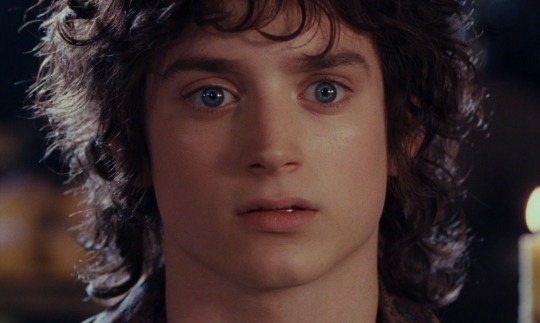


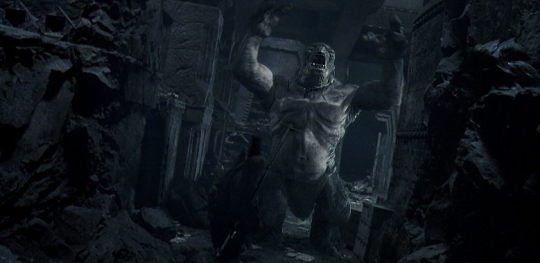
The current movie for review from the AFI top 100 is the most recent of the films, Lord of the Rings: The Fellowship of the Ring (2001). This was the introduction of director Peter Jackson to much of the mainstream American audience despite him having a 20 year history of film making in New Zealand. The film is beautiful in so many aspects, from the special effects to the cinematography to the sets creating the world of Middle Earth. The film received 12 nominations at the Academy Awards and received 4 of them, a feat unheard of for an epic fantasy film. This is also the only “incomplete” film on the AFI list because there are no other “too be continued” stories. There are some films that are first and second parts (specifically The Godfather 1 and 2), but this is the only one that intentionally stopped with intent for the story to pick in the next film. With that being said, the sheer number of characters and the intended incomplete nature of the film makes it almost impossible to summarize without just going scene by scene. There are 100 movies on this list and I am not going to set any precedence that I will be doing that, so here is a very brief synopsis of what happens in this film without diving into too much of the lore concerning the rest of the trilogy or The Hobbit:
SPOILER WARNING!! I DON’T KNOW WHY IT IS NECESSARY ON THIS ONE, BUT I DO IT EVERY TIME AND I WANT TO BE CONSISTANT!! IF YOU HAVEN’T SEEN THIS BY NOW OR ARE UNFAMILIAR WITH THE STORY, THEN YOU ARE LIKELY VERY YOUNG, LIVE UNDER A ROCK, OR PURPOSEFULLY AVOIDING IT!!! YOU HAVE BEEN WARNED SO I DON’T WANT TO GET ANY NOTES ON THIS ONE!!!
So here is the general outline, there was an evil guy named Sauron that gave out rings of power to the Elves, Dwarves, and Humans in a realm called Middle Earth. This land is a fantasy realm that has a mix of Dark Age castles mixed with monsters and human like races. It looks strangely like New Zealand through a lot of the country side. Coincidence I am sure. Anyway, Sauron tricked the different races because he kept for himself one ring to rule them all and bind the ones wearing the rings to him. This did not go over well so the humans, elves, and dwarves rose up and fought Sauron and his armies and were able to get the master ring during battle. There was a chance for them to destroy the ring but human corruption prevented this and the ring was eventually lost. It eventually ended up in the hands of a man that kept it close and allowed it to suck away his life until it was stolen by a small human-like creature named Bilbo Baggins. The ring was taken on many adventures (see The Hobbit films for this story) and it gave this little hobbit prolonged life, but it also became an addictive burden. Bilbo decided to go off and leave the ring for his nephew and this is where the story begins. I know, it’s a lot.
A wizard named Gandalf (Ian McKellen) comes to the hobbit village as Bilbo is leaving and makes sure the ring is left in the hands of the nephew Frodo (Elijah Wood). The wizard confirms the ring is the one that rules them all and reveals that Sauron is regaining power and wants the ring. For the safety of the shire, Frodo must take the ring to Rivendell, home of the Elves, to figure out what must be done. Gandalf has to take care of some business so some other hobbits - Sam (Sean Astin), Merry (Dominic Monaghan), and Pippin (Billy Boyd) - get wrangled into the journey and the group of four go off to a local human town to meet Gandalf and continue forward. This short trip proves treacherous as the 9 humans that were given rings of power had been corrupted and turned into Nazgul that are attempting to track down the little group of hobbits. Gandalf does not show up, but the group run into a ranger named Strider at the human tavern and he helps fight off the ring wraiths. With the help of his elf girlfriend, Arwen, the group are able to make it to Rivendell where they are presumably safe for the time being.
A meeting is held at Rivendell and representatives of the different races all show up to decide what must be done. The ring must be destroyed so a fellowship to transfer the ring to Mount Doom is formed. It is made up of the four hobbits, Gandalf the wizard, an elf named Legolas (Orlando Bloom), Strider the Ranger who is actually a human king named Aragorn (Viggo Mortenson), a dwarf named Gimli (John Rhys-Davies), and another human named Boromir (Sean Bean). I have seen enough movies with Sean Bean as a side character to know that he is for sure going to die. It is only a matter of when.
So the group heads off toward Mount Doom and initially start by taking a path through snowy mountains but have to turn back and instead decide to go under the mountains. The dwarf is excited because he can visit his cousin who is king under the mountain. Alas, all they find is skeletons and an evil race created by Sauron called orcs. This race also seems to have other evil creatures enslaved including a cave troll. The Fellowship is chased through the bowels of the mountain until the orcs suddenly back off and the group finds something even worse, an ancient evil called a Balrog. Gandalf takes on the creature at a stone bridge and screams the now memed words “You shall not pass!” The Balrog falls into a pit but drags Gandalf down as well, reducing the number in the group by one wizard.
The group mourns the loss very briefly (and dramatically) before traveling to an elven forest where Frodo is told by a queen that he will have to take on the quest alone and that one of the fellowship will betray him. They continue on and it turns out that a wizard named Saruman that was corrupted by Sauron (confusingly close in name, I know), has created super buff orcs called Uruk-hai (pronounced “Orick Eye” all blended together) to hunt down the party. Boromir tries to take the ring from Frodo but immediately makes up for it by sacrificing himself to protect the hobbits from the super orcs. Sean Bean was kind of a bad guy and was killed. What a surprise. That actor really needs to find different roles or he is going to spend his entire career being type cast.
Anyway, Frodo and Sam break away from the group to go off on their own, the other two hobbits are captured and taken by the orcs, and then Aragorn, Legolas, and Gimli decide to track everybody down. To be continued.
This probably seems like quite a short synopsis for a 3 hour movie...but legitimately the movie is a visual spectacle in which not a lot happens. Most of the movie is traveling, fighting, introducing the lore of the world, and introducing characters. Not a whole lot of plot progression in this particular movie, but it sets the stage for the second film to be nothing but battle and progression (an hour long battle of Helm’s Deep which is amazing), while the last one is nothing but battles and resolution of every story line. It is an incredible trilogy and this is only the beginning and it had audiences drooling for more.
In fact, Peter Jackson films set the standard for special effects for the early 21st century. His team took home the Oscar for best visual effects in 2001 for Fellowship of the Ring, in 2002 for The Two Towers, in 2003 for The Return of the King, and in 2005 for King Kong. No film series with consecutive releases has done this except Lord of the Rings (not even with Star Wars, Marvel, and DC universe films coming out constantly). The series really is something special. Attempts had been made to tell the trilogy as an animated movie, but no drawings could do the world justice. It took advanced computer graphics, motion capture technology, an expansive New Zealand countryside, a quirky director that had envisioned this world his whole life, and a dedicated cast and crew that was fully committed to the project. It is an amazing piece of filming.
If I have any complaints, it is that there is some really corny drama. The amount of times that Elijah Wood overacts in pain or despair is more digits than I have. Especially when the group is mourning the loss of Gandalf...it is kind of embarrassing. It is that “inconsolable parent who lost a child” acting with scream crying and shouts of “Noooooo!” It is all the hobbits, too, which doesn’t help that they are the size of children and are having a despair tantrum. Luckily they keep going and that is a one minute scene, but still it is embarrassing. Also, Frodo is stabbed and presumed dead twice. I can see why there were no nominations for best actor because it was not the best acting.
It is all made up for by the incredible battles. For me, it is the chase under the mountain with the orcs and the cave troll and the balrog. That is about 30 minutes of constant fight or flight that left me short of breath. I realized I kept forgetting to breath I was so mesmerized by the constant intensity. There is also a good amount of comedy since the hobbits are generally peaceful farmers and they don’t know how to (or want to) have adventures and keep messing things up. Pippin and Merry keep touching things that they shouldn’t and it brings all kinds of trouble. I think it is one of them that knocks some armor into a well that catches the attention of the orcs under the mountain.
Two specific scenes that I found memorable in that they are burned into my brain forever were the Nazgul fight and the appearance of the cave troll. The Nazgul are absolutely terrifying in that they have no face and have only one intent: kill whatever they are hunting. A good comparison would be to Dementors in the Harry Potter universe. The Nazgul are like Dementors with swords and armor. What is worse, Frodo can use the one ring to make him invisible, but it puts a target on him for the Nazgul and they come straight for him. They idea that you can’t hide from this evil and attempting to will make you stand out more is kind of horrific. I found the Nazgul truly disturbing. The cave troll is just awesome and huge. At no point was I worried for the team on this occasion because the wizard, elf, dwarf, and humans seemed undefeatable. It was more of curiosity about how they were going to handle this challenge. The detail of filming all the actors and sets so they were affected by the troll made the huge beast and the threat it posed in an enclosed space seamless.
There was some question why this movie was on the AFI list and the other movies in the trilogy were not, especially with the third film winning 10 Oscars including best picture. It is because this was the watershed film that made the others possible. I got to see the film in the theatre and it was an experience like no other. I cannot think of a movie that had created such a complete fantasy world like LOTR and it made for a truly cinematic experience. I generally do not like movie theatres because people around me whom I have no control over can affect my experience and I am not normally willing to pay for that. However, the theatre I was in had tiered level seating that was graded enough so that nobody blocked my view and ample leg room that also prevented kicking from behind. It was a thing of beauty and I went and saw the other two films in the theatre as well. It was amazing.
So does this film deserve to be on the AFI 100? My goodness, I would think less of the AFI if it wasn’t. It changed audience expectations of what a movie could be and set the tone for the new millennium as far a big budget cinema. Would I recommend it? Please, I own it. If you come by my place and you haven’t seen it, then I will be happy to put aside 3 hours and watch it again with you. It is the easiest epic film to get through, in my opinion, and I don’t think you will be sorry to give up the time. Just a fantastic movie.
#lord of the rings#the fellowship of the ring#peter jackson#Elijah wood#viggo mortensen#liv tyler#sean astin#ian mckellen#visual effects#Oscar winner#afi film list#film review#nazgul#cave troll#computer graphics#introvert#introverts#theatre experience#fantasy#epic films
23 notes
·
View notes